AMERICAN MADE
Snap-on CEO Nick Pinchuk is rewriting the rules for an era of manufacturing that’s faster, more complex and filled with opportunity right here at home. An exclusive interview

PLUS BEATING SOCIAL MEDIA ANARCHY STRATEGY FOR THE AGE OF AI
MAKING SILENCE YOUR SUPERPOWER
SPECIAL REPORT: THE BEST & WORST STATES FOR BUSINESS 2023
THE VOICE OF AMERICA’S CEO COMMUNITY | SPRING 2023
Bringing a $2 billion future online faster.
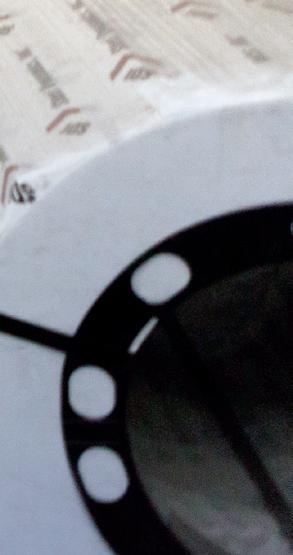




GET MIGHTY.

When Steel Dynamics began searching for the perfect site for its nextgeneration recycled aluminum flat rolled mill, Mississippi came through. Not only did we have the ideal shovel-ready location and critical infrastructure in place to support the company’s massive expansion, we offered one of the fastest timelines in the country that would get its products to market without delay.

Find out how Mississippi’s world-class incentives, optimal locations and speed to market can grow your business. Get mighty at mississippi.org.

COVER STORY
22
‘THE PRIDE AND DIGNITY OF WORK’
For decades, Snap-on CEO Nick Pinchuk has extolled the virtues of domestic factories and the Americans who labor in them. On the cusp of a U.S. manufacturing renaissance, he shares his thoughts on facing the future—and what industrial leaders will need next.
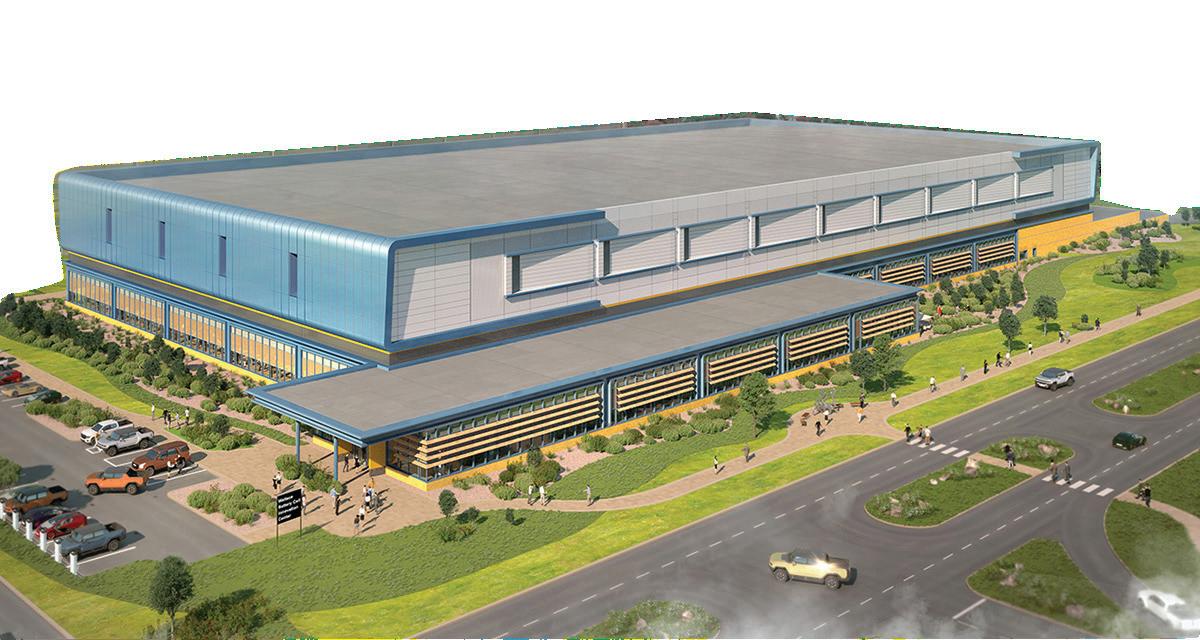


STRATEGY
32 UNLEASHING YOUR AI ADVANTAGE
What can—and can’t—artificial intelligence do for your company? We asked author and AI expert Tom Davenport to take us beyond the buzz for a pragmatic look at the realworld potential of the technology.
TOOLBOX
36
IT’S TIME TO AUTOMATE
Rising wages and a dearth of skilled workers are driving CEOs to push artificial intellegence and robotics ever deeper into their operations. Here’s what some of them are learning along the way.
2023 BEST & WORST STATES FOR BUSINESS
44 WHERE THE BOOM LIVES ON
Recession? What recession? Our annual CEO survey of the Best & Worst States for Business finds relentless activity all across America, fueled by the still-hot eeonomy, foreign captial and the gold rush for EVs and chips.
THE EDGE
54
SILENCE IS A SUPERPOWER
In a world of oversharing, over-emailing and overtalking, quiet is more than just golden. It’s one of the most powerful leadership skills you can develop. But it can take some work.
TALENT
62 SOLVING SOCIAL ANARCHY
Employee messaging on TikTok, Twitter, Instagram, Facebook and other media platforms is an ever-expanding minefield for companies. Here’s how some are balancing workers’ right to personal freedom with reputational risk.
SPRING 2023 No. 318 FEATURES
CONTENTS
COVER PHOTO BY BOB STEFKO
22 54 44
DEPARTMENTS
Living
A legacy business has to find growth while staying true to its roots. Some tactics. By Ed Quinlan
Chief Executive (ISSN 0160-4724 & USPS # 431-710), Number 318, Spring 2023. Established in 1977, Chief Executive is published quarterly by Chief Executive Group LLC at 105 West Park Drive, Brentwood, TN 37027. Wayne Cooper, Executive Chairman, Marshall Cooper, CEO. © Copyright 2021 by Chief Executive Group LLC. All rights reserved. Published and printed in the United States. Reproduction in whole or in part without permission is strictly prohibited. Basic annual subscription rate is $99. U.S. single-copy price is $33. Back issues are $33 each. Periodicals postage paid at Brentwood, TN and additional mailing offices.
POSTMASTER: Send all UAA to CFS. NON-POSTAL AND MILITARY FACILITIES: send address corrections to Chief Executive Group LLC at 105 West Park Drive, Brentwood, TN 37027.
Subscription Customer Service
Chief Executive Group, LLC
105 West Park Drive Brentwood, TN 37027
P: 615-592-1380
E: subscriptions@chiefexecutive.net
W: ChiefExecutive.net/magazine
EDITOR Dan Bigman
MANAGING EDITOR Jennifer Pellet
DIGITAL EDITOR C.J. Prince
ART DIRECTOR Gayle Erickson
PRODUCTION DIRECTOR Rose Sullivan
CHIEF COPY EDITOR Rebecca M. Cooper
CONTRIBUTING EDITORS Dale Buss, Daniel Fisher, Marshall Goldsmith, Kelly Goldsmith, Jeffrey Sonnenfeld
EXECUTIVE EDITOR, CHIEF EXECUTIVE GROUP Emily DeNitto
DIGITAL PRODUCER Alessandra Cooper
VP, PUBLISHER, CHIEF EXECUTIVE Christopher J. Chalk | 847-730-3662 cchalk@chiefexecutive.net
DIRECTOR, BUSINESS DEVELOPMENT Lisa Cooper | 203-889-4983 lcooper@chiefexecutive.net

MANAGER, STRATEGIC PARTNERSHIPS Rachel O’Rourke | 615-592-1198 rorourke@chiefexecutive.net
CHIEF EXECUTIVE GROUP
EXECUTIVE CHAIRMAN
Wayne Cooper
CHIEF EXECUTIVE OFFICER
Marshall Cooper
CHIEF CONTENT OFFICER
Dan Bigman
CHIEF COMMUNITY OFFICER
R.D. Whitney
DIRECTOR OF EVENTS & PUBLISHER, CORPORATE BOARD MEMBER
Jamie Tassa
VP, PUBLISHER, STRATEGICCXO360.COM
KimMarie Hagerty
DIRECTOR OF MARKETING Simon O’Neill
VICE PRESIDENT Kendra Jalbert
HR MANAGER / OFFICE ADMINISTRATOR
Patricia Amato
RESEARCH DIRECTOR Melanie Nolen
DATA SERVICES DIRECTOR Jonathan Lee
DIRECTOR, DIGITAL PRODUCTS Leigh Townes
ASSISTANT CONTROLLER Brittney Smith
STAFF ACCOUNTANT Marian Dela Cruz
MARKETING MANAGERS
Simone Bunsen, Christian Robinson
EVENTS & MEMBERSHIP MANAGER Rachael Gaffney
EVENTS COORDINATOR KP Wilinson
DATA ANALYST Denise Gilson
CLIENT SUCCESS MANAGER Victoria Campbell
STRATEGIC PARTNERSHIPS ASSOCIATES
Lara Morrison, Allison Roberto
RESEARCH ANALYST Isabella Mourgelas
CHIEF EXECUTIVE NETWORK
PRESIDENT Rob Grabill
EXECUTIVE DIRECTOR Chuck Smith
DIRECTOR OF OPERATIONS JoEllen Belcher
SENIOR MARKETING MANAGER Janine O’Dowd
DIRECTOR OF MEMBER SERVICES Brandon McGinnis
SALES SUPPORT ASSOCIATE Brittany Hochradel
4 EDITOR’S NOTE Power in the Network 6 RESEARCH An Optimism History Lesson 10 LEADERS Lessons from SVB Another decade, another banking crisis. What should we learn from this one? CEOs and CFOs share their thoughts. By Dale Buss 14 Law Brief / Daniel Fisher Careful What You Wish For 16 Coaching Yourself / Kelly Goldsmith & Marshall Goldsmith The FeedForward Exercise 18 On Leadership / Jeff Sonnenfeld Exposing Obfuscation 68 PLANE ADVANTAGE We Have Lift Off Dozens of companies are working toward vertical landing and takeoff planes that cut costs and emissions. A look at what’s in the offing for future air travel.
LAST WORD
72
Your
Principles
CONTENTS
68
POWER IN THE NETWORK
ON THE AFTERNOON OF FRIDAY, MARCH 10, more than 200 CFOs from around the country gathered in a Zoom meeting hosted by the CFO Leadership Council, a division of our company that regularly convenes finance leaders in 28 cities around the country.
That particular day, they weren’t getting together to discuss improving their communication skills or figuring out the best billing software. They were there because they were scared. And they were scared because they were almost all depositors of Silicon Valley Bank at a moment when no one—not them, not SVB’s bankers, not the FDIC and certainly not the tens of thousands of employees wondering whether they’d get paid—knew what would happen over the next two dreadful weekend days. One by one, they shared information and started to solve one another’s problems. What their SVB banker said on a phone call, what they knew about FDIC insurance, about sweep accounts, about the legal responsibility for making payroll. They asked questions and talked about everything you’d want your under-the-gun CFO to know at that moment. They spent almost two hours talking, counseling one another, caring about one another. Caring for one another. Working it out.
Soon, news outlets from The Wall Street Journal to CNBC to Barron’s were reaching out to us, looking to tap into the wisdom of this remarkable community.
Get a Group
Watching this unfold in real time dramatically reinforced a fundamental belief of this publication and our parent company: that when it comes to finding pragmatic solutions and getting substantial answers to your questions, there is simply no substitute for learning from your peers.
It’s why we publish Chief Executive—with its very deliberate emphasis on hearing from practicing CEOs—and also why we operate the CFO Leadership Council, as well as the Chief Executive Network, the Senior Executive Network, Chief Executive Boards International and, through our Corporate Board Member division, the CBM Institute.
We’re passionate, religiously so, about peer networks because we’ve seen, year after year, cycle after cycle, the transformative power that comes from top leaders getting together with others in the same job and just talking things through.
It isn’t casual observation, either. A study conducted for Chief Executive benchmarked our CEO Network members versus industry peers and found members experienced an average revenue growth rate just above 5 percent compared to an industry average of only 1.62 percent—more than 200 percent faster growth. They also enjoyed operating margins of 22.6 percent vs. an industry average of only 10.26 percent—more than twice the profitability.
And while, of course, we’d love you to join and become one of our members, what’s more important is that you join a peer network or group of some kind. Whether it’s one of ours or Vistage or YPO or EO, there’s power—stealing a bit from the labor movement here—in the network. Do yourself a favor and get connected. There’s no reason to go it alone, especially in times like these. —Dan Bigman, Editor
ADAM ARON
President and Chief Executive, AMC
MARC BENIOFF
Founder and CEO, Salesforce
2022 CEO of the Year
KEN FRAZIER
Former Chairman and Chief Executive, Merck & Co.
2021 CEO of the Year
DAN GLASER
Former President and Chief Executive, Marsh McLennan
FRED HASSAN
Former Chairman, Bausch & Lomb; Partner, Warburg Pincus
MARILLYN A. HEWSON
Former Chair and Chief Executive, Lockheed Martin 2018 CEO of the Year
TAMARA LUNDGREN
President and Chief Executive, Schnitzer Steel Industries
BRIAN MOYNIHAN
Chairman and Chief Executive, Bank of America
2020 CEO of the Year
ROBERT NARDELLI Chief Executive, XLR-8
THOMAS J. QUINLAN III
President and Chief Executive, RR Donnelley
JEFFREY SONNENFELD
President and Chief Executive, The Chief Executive Leadership Institute, Yale School of Management
CARMINE DI SIBIO
Global Chairman & CEO, EY Exclusive Adviser to the Selection Committee
TED BILILIES, PH.D. Chief Talent Officer, Managing Director, AlixPartners
CONTACT US
Chief Executive Group LLC 105 Westpark Dr., Suite 400 Brentwood, TN
Phone: 203.930.2700
Fax: 203.930.2701
ChiefExecutive.net
Advertising, Custom Publishing, Events, Roundtables & Conferences

Phone: 847.730.3662
advertising@ChiefExecutive.net
REPRINTS
Phone: 203.889.4974
4 / CHIEFEXECUTIVE.NET / SPRING 2023
CHIEF EXECUTIVE OF THE YEAR 2023 SELECTION COMMITTEE
EDITOR’S NOTE
lOve we
what’s next-ers momentum builders game changers companies with vision world-first innovation industry revolutionizers competitive edge seekers
Wisconsin loves to help all sorts of companies find their version of success. That includes yours. From site selection through construction, opening and expansion, we provide support to ensure your vision becomes reality. After all, your success may inspire other companies to relocate or expand here, too. That’s how we look forward.

InWisconsin.com
SWEEPING TAX REFORMS HAVE DONE WONDERS FOR NORTH CAROLINA BUSINESSES.



LET THEM DO WONDERS FOR YOU.
At just 2.5% and falling, North Carolina’s corporate tax rate helps businesses across industries expand, invest, compete, attract talent and create jobs.



Read the KPMG and Tax Foundation study.






































































AN OPTIMISM HISTORY LESSON
Insights from Chief Executive Group’s CEO Confidence Index, a widely followed monthly poll of CEOs, including members of the Chief Executive Network (CEN), our nationwide membership organization that helps C-Suite executives improve their effectiveness and gain competitive advantages. For more information, visit chiefexecutivenetwork.com.
THE TRACKING OF OUR CEO CONFIDENCE INDEX, which measures CEO sentiment for business 12 months out, indicates that CEOs are losing confidence in their short-term outlook for the U.S. economy. After emerging from a ninemonth slump during which our forward-looking indicator read in the 5.1–5.9 range (measured on a 10-point scale), the Index bounced back 7 percent in January, to 6.3. But that didn’t last long. By early March, the Index had already given back 3.5 percent, falling to 6.11—9 percent lower than a year prior, in March 2022.
For most of the past 12 months, CEOs have been highly sensitive to interest rate movements and the key economic indicators driving the Fed’s policy. The Index’s drop below the six point mark started last May, around the time the Fed bumped its interest rate increase to a half point. It then reached a bottom in July, at 5.12— and remained in the five-level range until this past January.
After years of running in the high sixes and ocasionally breaking seven, eight months of consecutive readings in the five-point range might seem indicative of trouble. After all, CEOs taking heed of the ongoing threat of a recession were telling us they were pulling back on spending and hiring and re-forecasting revenue and EBITDA targets. But a short-term view can be misleading. Comparing CEO sentiment today to the Index’s movements over time tells a different story.
There’s no doubt that a reading of 6.11 is low compared with the past few years’ averages, but not when compared to the country’s last true recession. In February 2009, during the Great Recession, the Index dropped to 1.54, and it averaged 3.44 that year.
While the current 6.11 is a drop from the 7-plus readings during half of 2021, it’s not necessarily indicative of a significant downturn in the U.S. economy. In fact, the last time the Index flirted with levels below six was in 2013—also the last time the U.S. faced a debt ceiling crisis. That year, optimism among CEOs fell to 5.29 at its lowest point in January and averaged 5.78 for the 12-month period. Those figures look a lot like our latest set of readings, with a low of 5.12 and a 5.88 average for the 12-month period.
The good news, if history is to repeat itself, is that 2014 saw the Index rise to its highest level in nearly a decade, as optimism and bullish outlooks returned once the debt ceiling crisis was resolved. While other factors are at play today, putting the data in a historical context shows that CEOs may not be ready to call foul on the economy just yet. —Melanie
Nolen and Isabella Mourgelas
CEO FORECAST OF BUSINESS CONDITIONS 12 MONTHS AHEAD
AD INDEX
7 CEO AND SENIOR EXECUTIVE COMPENSATION REPORT FOR PRIVATE COMPANIES chiefexecutive.net/compreport
53 CEO 100 chiefexecutivenetwork.com/ceo100
57 CHIEF EXECUTIVE NETWORK chiefexecutivenetwork.com
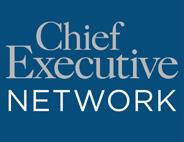
8, 9 DELOITTE RELOCATION SERVICES deloitte.com/us/en/pages/operations/topics/ real-estate-and-location-strategy
31 DON YAEGER donyaeger.com
5 ECONOMIC DEVELOPMENT PARTNERSHIP OF NORTH CAROLINA edpnc.com
Inside back cover FINANCIAL PERFORMANCE BENCHMARKS REPORT chiefexecutive.net/benchmarksreport
19 FRISCO friscoedc.com
13 GREATER FORT LAUDERDALE ALLIANCE lesstaxing.com
20, 21 INVEST PUERTO RICO investpr.org
Back cover JOBSOHIO jobsohio.com
65 JOE HART/CARNEGIE dalecarnegie.com/en/joe-hart
15 KENTUCKY CABINET FOR ECONOMIC DEVELOPMENT ced.ky.gov
59 LEADERSHIP SUMMIT chiefexecutive.net/leadershipconference
17 LOUISIANA ECONOMIC DEVELOPMENT opportunitylouisiana.com
60, 61 MELMARK melmark.org
47 MISSOURI ONE START missourionestart.com
Inside front cover MISSISSIPPI DEVELOPMENT AUTHORITY mississippi.org
41 PATRIOTS IN BUSINESS chiefexecutive.net/patriotsinbusiness
71 RED CROSS redcross.org
67 SENIOR EXECUTIVE NETWORK seniorexecutivenetwork.com
43 STEPHEN M.R. COVEY trustandinspire.com
29 STS CAPITAL PARTNERS stscapital.com/evaluation
49 TEXAS ECONOMIC DEVELOPMENT CORPORATION businessintexas.com
51 VIRGINIA ECONOMIC DEVELOPMENT PARTNERSHIP VIRGINIA ECONOMIC DEVELOPMENT vedp.org
3 WISCONSIN ECONOMIC DEVELOPMENT inwisconsin.com
6 / CHIEFEXECUTIVE.NET / SPRING 2023 March ‘22 April May June July August Sept. Oct. Nov. Dec. Jan. ‘23 Feb. March 6.71 6.10 5.92 5.57 5.12 5.82 5.92 5.75 5.69 5.90 6.30 6.33 6.11 CHIEF EXECUTIVE RESEARCH
Chief Executive’s CEO Confidence Index is measured on a scale of 1–10.
CEO & Senior Executive Compensation Report for Private U.S. Companies
Access timely compensation benchmarks to ensure your people are paid fairly–and know it.
It’s critical to know how your competitors are allocating pay across all senior executive positions. Find out if you are offering the right compensation plans to attract and retain high-performing executives with the 2022-23 CEO & Senior Executive Compensation Report for Private Companies.
KEY METRICS INCLUDE:
Total compensation by company revenue, industry and ownership type
Compensation by number of employees, region and labor market
Benefits and perks value
Equity grants and appreciation

Expected cash compensation for the year ahead
Order by May 31 to SAVE $300 with code SMD300
PLUS, get an inside look at how your competition is compensating front-line and back-office workers in the complimentary bonus report included in your order.
To learn more or to order, visit ChiefExecutive.net/CompReport
2022-23
RESEARCH
Strategic Locations: The Secret to
BY DARIN BUELOW AND NATALIE LYNCH
AS EARLY AS 2018, U.S. EMPLOYERS have been competing for top talent during one of the most significant labor shortages in recent history. This labor shortage has been compounded by ongoing Covid-19 pandemic impacts, changes in employee preferences for hybrid versus in-person work, an aging workforce and a shortage of qualified workers with key skillsets to fill vacancies. Yet recent trends may indicate that a cooling period for the U.S. labor market is approaching. January’s Job Openings and Labor Turnover Survey (JOLTS), released by the U.S. Bureau of Labor Statistics in early March, indicates that job openings are falling, layoffs are increasing and quits are dropping.
These trends have been front and center in big tech, where more than 1,500 tech firms have executed nearly 300,000 layoffs across corporate and technical functions in the last two years1. Largescale layoffs have not been restricted to big tech employers—in the last six months, companies in automotive, consumer and industrial products; financial services; life sciences sectors and more have announced intentions to reduce headcount across corporate and technical job roles. Even with these emerging signs of a cooling labor market, we are far from the days when employers enjoyed an abundance of talent across functions and workers outnumbered job vacancies. U.S. job openings are still at more than 10 million strong as of January 2023, nearly double the number of unemployed people looking for work2. Even if the labor market cools moderately from its current state, employers will still need to continue to compete for key talent.
So, what can CEOs do to improve their talent share under these difficult circumstances? First and foremost, it is imperative to recognize that not every region is experiencing the same labor conditions for every job role. Labor conditions and costs associated with specific job functions vary widely across the U.S., and locations that may present favorable conditions for attracting and retaining software engineers may be less suitable for manufacturing technicians, financial analysts or other functions. Employers should let their talent needs drive their geographic footprint, rather than shackling themselves to existing locations or available office space that the company may be keen to fill. In the accompanying charts (above right), we have evaluated labor costs and labor availability for software engineers, financial analysts and manufacturing technicians across six U.S. metros. The performance of each city in terms of labor costs and talent availability varies by job category.

SUMMARY RESULTS3,4
Austin, TX: Austin has enjoyed years of investment from big tech firms and other high-profile companies moving operations to the area. While the region may have opportunities for labor cost savings over more established hubs such as Seattle (40 percent cost savings for software developers) and New York (50 percent cost savings for financial analyst roles), Austin’s growing yet relatively limited labor pool is struggling to keep up
with demands from employers across multiple functions. Recent mega-project announcements are also putting pressure on Austin’s manufacturing talent; the less than 700 technicians in the market can command a nearly 10 percent premium in labor costs over the national average.
Dallas, TX: Dallas is one of the fastest-growing labor markets in the U.S. and has drawn cross-functional talent attracted to the area’s relatively affordable cost of living and a large presence of well-known company headquarters, business centers and other operations with employment opportunities. Dallas presents strong conditions for corporate-leaning functions, including financial analysts, where the market performs on-par with New York but at 50 percent of the labor costs.
Denver, CO: Despite its strong population growth over the last few years, Denver’s labor market tends to have weaker performance indicators and relatively high costs for the evaluated job roles. It has a comparatively small pool of talent in each role, characterized by a high level of competition among employers. Companies deploying a manufacturing facility in particular may want to think twice about Denver as a location option: with less than 400 manufacturing technicians and a decline of 3.3 percent in employment for this role over the last three years, this type of skillset is comparatively scarce in the market.
New York, NY: As a long-established hub for financial institutions, business services and other major industries, New York is typically among the highest-cost locations for most job functions in the U.S., especially for corporate roles. Companies hiring financial analysts may find strong pools of relevant talent in New York, but can capitalize on similarly high-performing labor markets for these roles at a fraction of New York’s costs. While New York has some 2,000 manufacturing technicians in the labor market, this population has declined by more than 8 percent over the last three years, creating weaker labor market conditions for this job role.
THOUGHT LEADERSHIP PROVIDED BY DELOITTE LLP
Attracting and Retaining Talent
Phoenix, AZ: While Phoenix has enjoyed decades of investment in office and manufacturing operations across industries, competition for talent has reached extreme levels, with unemployment rates for software developers and financial analysts at less than 1.0 percent. Compared to other locations, Phoenix has a lower labor supply, slower employment growth and a location quotient5 on par with the U.S. average in these two job functions, creating challenging conditions for attracting talent despite relatively competitive labor costs. Where Phoenix shines is in manufacturing talent—it is one of the few evaluated markets with a growing manufacturing technician workforce and a strong concentration in relevant skillsets.
Seattle, WA: Like New York, Seattle tends to be among the highercost markets in the U.S. for the evaluated job functions, particularly for tech talent and manufacturing technicians. As a well-established hub for software developers with major big tech employers in the market, Seattle demonstrates highly favorable labor market conditions for this job function, but at a significant cost premium compared to the U.S. average. With the recent tech layoffs, Seattle labor costs for software developers may not increase as much over the next few years, but are unlikely to become competitive with labor costs in Austin, Dallas or Denver anytime soon.
Every company has a unique story as to how it came to establish its footprint of operations, many having grown either organically
1 Layoffs.fyi, Accessed on 8 March 2023. https://layoffs.fyi
THE POSITION OF EACH LOCATION ON THE CHART CAN BE INTERPRETED AS FOLLOWS:
Top-Right Quadrant: Locations with the optimal balance of job-specific labor costs and labor market conditions
Bottom-Right Quadrant: Locations with relatively strong labor market conditions but expensive labor costs
Bottom-Left Quadrant: Locations with relatively poor labor market conditions and expensive labor costs
Top-Left Quadrant: Locations with relatively poor labor market conditions but competitive labor costs
or through acquisition. However, labor markets that historically made sense for certain aspects of the business may now present significant challenges for talent recruitment and retention or may be too expensive to sustain the required operations. Before scaling up or winding down in any labor market, CEOs need to direct their teams to evaluate existing and new location opportunities based on the specific talent requirements of the business and a holistic view of cost and non-cost factors.
Darin Buelow (dbuelow@deloitte.com) is a principal in Deloitte’s Real Estate Strategy and Sustainability practice and a founding member of the Site Selectors Guild. Natalie Lynch (nalynch@deloitte.com) is a manager in Deloitte’s Real Estate Strategy & Sustainability practice and an associate member of the Site Selectors Guild.
2 U.S. Bureau of Labor Statistics, The Employment Situation–February 2023. Released on 10 March 2023. https://www.bls.gov/news.release/empsit.nr0.htm
3 Methodology and chart Interpretation: Each chart showcases the relative labor market conditions and labor costs across six U.S. metro areas that are specific to the indicated job function. Labor availability (x-axis) is comprised of the following non-cost factors: employment level, three-year change in employment level, location quotient (occupation concentration), and unemployment rate for each specific function. Each factor is scored on a scale from 1–5, with five being the best-performing location and one being the worst-performing location. Labor costs (y-axis) are the average annual base salaries for the specified job function in each location, indexed to the U.S. average (U.S. = 1.00). Locations with index values greater than 1.00 have higher costs than the U.S. average for the specified occupation, while an index value lower than 1.00 indicates lower costs than the U.S. average for the specified occupation.
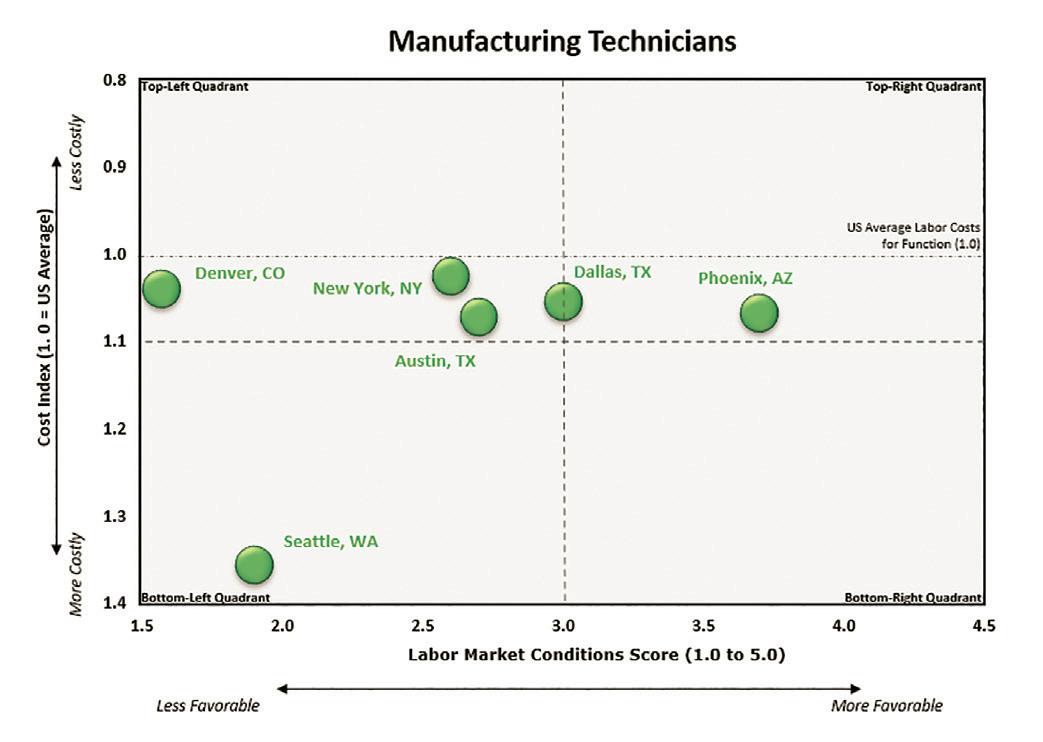

4 Labor market and cost data obtained from the U.S. Bureau of Labor Statistics via JobsEQ, data as of 2022 Q3.
5 Location quotient (LQ) is a measure of the concentration of an occupation in a region compared to the national average. A location with an LQ value greater than 1.00 (U.S. average) in a specified occupation indicates a higher concentration of that occupation in the location than in the U.S. occupations that have both a large presence and an LQ value greater than 1.00 can be considered a vital component to the region’s economy.
As used in this document, “Deloitte” means Deloitte Consulting LLP, a subsidiary of Deloitte LLP. Please see www.deloitte.com/us/about for a detailed description of our legal structure. Certain services may not be available to attest clients under the rules and regulations of public accounting. Copyright © 2023 Deloitte Development LLC. All rights reserved.
LEADERS LESSONS FROM SVB
THE BANKING CRISIS KICKED OFF BY THE DEMISE of Silicon Valley Bank opened other crevices, ranging from the creakiness of the global financial system to the riskiness of the Fed’s approach to inflation-fighting to the infirmity of the engine of innovation that has been driven by America’s digital-tech giants for a quarter-century.
BY DALE BUSS
That means it’s time for CEOs to see beyond the imme diate wreckage and imminent new dangers and exercise some of the main muscles of their job: strategic vision, tactical wile and a focus on how to get to a horizon that may look different than it did just a couple of months ago.
“We were on a reset path anyway, given increasing interest rates and reevaluation of tech companies that were about growth at all costs,” says Greg Cohen, CEO of Fortis, an embedded-payments company. “This is, in part, a return to business fundamentals that will favor companies that are profitable and that have a better trajectory toward profitability than toward growth at all costs.”
Among the actions company chiefs should be taking: working with their CFOs and boards to ensure the soundness of their treasury now and in the future. Another possibility is taking advantage of the new uncertainties to position their companies better in a broader sense. Chief Executive reached out to some smart CEOs, CFOs, financial experts and big thinkers for tips on managing through what some are calling a “slomo” financial crisis that may not be over just yet. Here’s some of what they had to say:
Buttonhole capital.
Cash preservation is important for the next few weeks and months as the economy and your company navigate a suddenly more treacherous landscape—and that was after dealing with an incipient potential recession.
“I’m encouraging all business owners to stay close to your sources of capital,” says Craig Scheef, CEO of Texas Security Bank in Dallas. “Ask

10 / CHIEFEXECUTIVE.NET / SPRING 2023
Another decade, another banking crisis. What should we learn from this one? CEOs and CFOs share their thoughts.
your bank if it tests its own credit lines for backup liquidity and knows they’re available, and if so, what percentage of its deposits does availability of those lines represent?”
One possibility, Scheef says, is checking out cash-management platforms such as IntraFi ICS, a service that allows thousands of banks to spread out a company’s funds in increments of $249,000 to as many banks as necessary to get the amount covered by FDIC insurance in toto. The cost is roughly 15 basis points, he says.
In any event, see what your bank or banks can do. “Can you negotiate with your bank to maintain excess FDIC insurance?”
asks Michael Tomasulo, senior managing partner with the Baldwin Risk Partners, a risk-management firm. “Do you carry it, and can you do it in our scenario?”
Revisit the treasury. This includes asking your CFO to reexamine liquidity on an immediate and

long-term basis, credit facilities and lines of credit, especially given that the course of the economy is still iffy—and that the current financial turmoil could send it into a recession, which the U.S. so far has skirted. “Gap analysis,” particularly probing for vulnerabilities, should be an emphasis.
“It’s an opportunity to look at risk-management procedures and to dust off policies around treasury management,” says Michael Hayes, financial services team leader for PKF O’Connor Davies accountants. “Not a finger-pointing exercise, but looking at current policies and procedures and finding points for improvement and vulnerabilities.”
Companies should always have a 13-week cash-flow forecast and consider stress-testing scenarios for how the next 13 weeks might play out. “Particularly now,” says Scheef. “The businesses we’re talking to are seeing a bit of a slowdown. What that forecast does is see around corners.
If you understand how your inflows and outflows behave, it’ll show you certain
CEO MAGAZINE / SPRING 2023 / 11
things coming down the line that you can address—with the benefit of time.”
Reconsider banking relationships. Keep lines of communication open with all your financial partners. “CEOs and CFOs should be collaborating with banks as well as their customers, investors and even regulators in order to build trust and transparency,” says PJ Gupta, CEO at startup Checkbook, a digital-payments platform backed by JPMorgan. “Nothing speaks more about a company’s efforts to support its customers in a time of crisis than clear communication from the CEO or founder.”
Diversify your banking relationships, even reaching out to alternatives, including non-bank lenders for short-term bridge loans to support critical payment needs if necessary.
Regional and community banks should also be part of that consideration, despite the stain that SVB’s overreliance on tech companies in the San Francisco Bay area has left on midsize and smaller financial institutions.

“Often these regional banks have missions that allow you to gain access to capital or other financial services,” Cohen says. “Plus, the threshold to have a ‘relationship manager’ at a large bank is very different than at a small bank. Another thing is, you can’t shop for financial services only online unless you know exactly what you want. And for guidance about all the different avenues you have for money to make money, to find ways to open new markets, you should have a relationship attached to them. You don’t know what you don’t know.”
Concludes Cohen: “It would be a bad thing for the world if there ended up being only two banks in the United States that managed everything.”
With the federal government’s backstopping of deposits and the likelihood that the
bank’s loans will be purchased, some CEOs are even rallying to the failed regional institution that tripped the current calamity.
“Most of [SVB’s] services are up and running, and they are even honoring the existing loans,” says Lana Feng, CEO and cofounder of startup Huma.AI. “They really made this difficult period tolerable and showed us again why we love SVB as a startup partner. We want SVB to live on in one form or another.”
That said: “Generally, if you hear investor chatter—which drives company behavior— it’s all about a move to safety,” says Chen Amit, CEO of Tipalti, a provider of financial-automation software. “‘Safety’ is major banks at the moment, and that’s where people go. And if they came from a bank that’s at risk or not isn’t material; it’s their perceptions that are material.”
Double down on due diligence.
“CEOs and CFOs should be exploring with their bankers what the differences are between their bank and Silicon Valley Bank,” says Russ Holland, CEO of Fieldpoint Private Bank. “We prepared messaging for our clients about being well capitalized with a good liquidity position and the comparative metrics of our position with other strong banks as well as the ones that are in the news so they can see mathematically how we compare.”
Ted Gavin, managing partner of Gavin/ Solomnese and former president of the American Bankruptcy Institute, advises, “CEOs and CFOs have to be active participants in banking relationships. Know your banks and what they’re invested in and what their deposits are backstopped by. It’s all readily available in reports.”
“A long-serving CEO can have an extraordinarily high level of trust in lieutenants and subordinates,” says Konrad Alt, partner and cofounder of Klaros Group advisers. “The lesson for other CEOs is, even though you’ve got great lieutenants and you trust them and have seen them handle tough situations before, you still have to bear down on their work and ask hard questions, and bear down on the exceptions. They need to pay attention, and they need to know you’re paying attention.” CE
12 / CHIEFEXECUTIVE.NET / SPRING 2023
“It would be a bad thing for the world if there ended up being only two banks in the United States that managed everything.”
—Greg Cohen, CEO, Fortis

A pro-business climate makes for a pro-business paradise. Visit LessTaxing.com or call 800-741-1420 ZERO STATE INCOME TAX access to over 6 million people and 100 languages spoken FROM ARRIVAL GATE TO OFFICE minutes 15
CAREFUL WHAT YOU WISH FOR
ONE OF THE VERITIES OF AMERICAN society is that success breeds contempt— and regulation.
More than 30 years ago, Sen. Alfonse D’Amato stood before Congress and issued an urgent call to regulate a new, fast-spreading type of technology that threatened a vital industry. “Are we to wait until the American music industry is destroyed or until our local record stores and radio broadcasters are driven from the marketplace, before we act to manage this monumental change?” he asked.
The threat: digital audio tape, or DAT, which allowed users to make multiple, exact copies of recorded music for the first time. Facing what it thought was an existential challenge to its existence, the Recording Industry Association of America threatened to sue Sony, Philips and other manufacturers for copyright infringement unless they prevented consumers from ripping off their music.
Practicing Protection
Electronics manufacturers quickly worked out a deal with politicians and the RIAA. The result was the Audio Home Recording Act of 1992. It protected manufacturers from copyright suits as long as they paid royalties and installed a “Serial Copy Management System” on every recorder to prevent consumers from making digital copies of digital copies.
Nobody under the age of 50 remembers DAT any more. And royalties from that once-threatening technology? They dwindled to nothing years ago as cheaper compact disc players satisfied demand for digital music.
to install chips to detect and prevent copies of digital video content. But like AHRA, the broadcast flag soon faded into obscurity. A federal court struck it down in 2005 as exceeding the FCC’s powers, and the agency quietly eliminated it in 2011.
Legal Catch-Up Time
There’s nothing new about this cycle of emerging technology, entrenched economic interests and government regulation. The railroad industry went through it in the 19th century as farmers and shippers first embraced the new way to get their goods to market, then howled about extortionate rates, while existing railroads complained about newcomers invading their territory. A lawyer for the Philadelphia and Reading Railroad wrote the first bill proposing federal regulation. The Interstate Commerce Commission, created in 1887, represented a compromise between shippers seeking rate controls and incumbent railroads bent on eliminating “destructive” competition.
Now it’s social media’s time to cut a deal. In 1996, Congress helped launch the Internet as a viable business by passing Section 230, protecting social-media platforms against lawsuits for hosting content created by third parties. That compromise is getting tattered at the edges now that companies like Google and Facebook stand atop the S&P 500 Index.
Fisher,
Remember “broadcast flags”? They followed a similar trajectory. This time, the Motion Picture Association of America was terrified that then-new digital broadcast signals would allow consumers to record movies and peddle them online. After negotiations with companies like Sony and Toshiba, the Federal Communications Commission in 2003 ordered TV manufacturers
In February, Google was forced to defend itself before the U.S. Supreme Court against claims its algorithms pushed violent content in front of viewers vulnerable to suggestion, inspiring them to commit terrorist acts. School districts are suing social-media companies for poisoning the minds of youth. The entire scenario, from algorithms to video on demand, was virtually inconceivable 50 years ago, just as a steam locomotive would have astounded a farmer in the 1700s. But now that Google and its peers have arrived, they have to play by the rules. And in America, those rules include negotiating with their opponents to establish new regulations in exchange for relief from potentially ruinous lawsuits and government meddling. Welcome to the club. CE

14 / CHIEFEXECUTIVE.NET / SPRING 2023 LEADERS LAW BRIEF \ DANIEL FISHER
When emerging tech disrupts a market, disruptive regulation invariably follows.
Daniel
a former senior editor at Forbes, has covered legal affairs for two decades.
‘Supply Kentucky’ Aims to Help Manufacturers Succeed
KENTUCKY IS BUILDING ON ITS RECORD ECONOMIC momentum
and taking steps to ensure its manufacturing supply chain is more connected than ever. On March 6, Gov. Andy Beshear announced the “Supply Kentucky” initiative, a renewed effort to boost job growth, reduce operational costs and provide more security for the supply chains of Kentucky manufacturers.

Supply Kentucky aligns the commonwealth and Kentucky Association of Manufacturers (KAM) to coordinate marketing efforts, provide resources related to workforce and connect Kentucky companies to suppliers throughout the country, as well as foster growth of minority- and female-owned businesses.
At the center of the Supply Kentucky initiative is the rollout of CONNEX Kentucky, a new online platform established through a partnership between the Cabinet for Economic Development and KAM that provides a searchable supply chain database for the state’s manufacturers. “It is crucial that we continue to provide companies in every corner of the state with the resources they need to stay connected with other Kentucky companies and build more economic momentum,” Gov. Beshear said during a kickoff news conference. “We’re launching a new initiative called Supply Kentucky with the goal of providing more security in the supply chains of our Kentucky companies, while also creating jobs and reducing costs. One of the first steps in this initiative is the launch of CONNEX Kentucky, a new online platform that provides a searchable supply chain database for manufacturers across the state. This new tool fills a critical void in that effort to ensure that Kentucky is the best place to do business.”
CONNEX Kentucky is part of the CONNEX Marketplace, a nationwide platform developed by i5 Services to connect the U.S. manufacturing supply chain. Manufacturers and suppliers are now using it across the country to connect with one another and find new business opportunities based on deep data such as equipment, certifications, SBA designations, processes, capabilities and other criteria.
CONNEX Kentucky registration is free to all Kentucky manufacturers and allows PRIMES and OEMs to view all U.S. supplier data in one location. Manufacturers can filter suppliers by location, certification, materials, equipment, processes and more. The platform also allows Kentucky suppliers to discover contract opportunities within new industries and connect and respond directly with OEM/PRIME buyers within the platform.
“Thanks to this important new partnership between the Kentucky Association of Manufacturers and the Kentucky Cabinet for Economic Development, Kentucky’s manufacturers and countless other companies have access to one of the best tools in the marketplace to help grow their revenue, strengthen their supply chains and enhance the job security of their employees,” said Frank Jemley, president and CEO of KAM.
“We are grateful to Gov. Beshear, Secretary Jeff Noel and the great team at the Cabinet for Economic Development for this collaboration that will create new opportunities for the Kentuckians who make world-class products.”

“I want to convey our deepest thanks for this extraordinary partnership between the Governor’s office, the Cabinet for Economic Development and the 260,000 Kentuckians who compete and win every single day in the global economy,” added KAM Board Chair JohnMark Hack. “Kentucky companies will now have access to a new tool that’s proven to strengthen their supply chains and grow their revenue.” Companies using CONNEX Kentucky also have the option to upgrade to the full national access subscription, which is free forever to Kentucky companies that register by May 5, using promo code KYFF during registration.
During his administration, Gov. Beshear has announced the creation of 43,700 full-time jobs and 838 private-sector new-location and expansion projects totaling $24.7 billion in announced investments. Kentucky is also coming off the best two-year period in state history for economic growth, and manufacturing played a major part.
Kentucky has an incredible manufacturing presence that spans every industry from automotive and metals to food and beverage. The state is home to more than 5,000 manufacturing facilities that employ over 250,000 people. In 2022 alone, new-location and expansion manufacturing projects accounted for $8.27 billion in new investments and 8,900 full-time jobs for Kentucky residents.
Location is a major factor in Kentucky’s appeal to manufacturers. The commonwealth is within a day’s drive from two-thirds of the U.S. population, making logistics and distribution easier than anywhere else. Kentucky is also home to two leading airports for cargo, and Amazon, DHL and UPS all operate international shipping hubs in the state.
But even more crucial to manufacturers is a workforce with the skills needed to succeed. The commonwealth ranks among the leading manufacturing states with over 12.5 percent of its workforce in the industry, compared to 8.1 percent nationally.
Kentucky’s leaders are focused on furthering the state’s pipeline of skilled workers to meet the needs of any industry and keeping its supplier base more connected than ever. The commonwealth has long had all the ingredients for its manufacturers to achieve long-term success, and with CONNEX Kentucky and the Supply Kentucky initiative, they’re now more connected than ever.
Learn more about CONNEX Kentucky at kam.us.com/connexkentucky
Gov. Andy Beshear’s CONNEX Kentucky platform ensures the commonwealth’s supply chain continues to thrive.
THOUGHT LEADERSHIP PROVIDED BY KENTUCKY CABINET FOR ECONOMIC DEVELOPMENT
COACHING YOURSELF \ KELLY GOLDSMITH & MARSHALL GOLDSMITH
THE FEED- FORWARD EXERCISE
IF YOU’VE ENDURED COUNTLESS
presentations over the years where speakers share slide after slide—with no interaction from participants—we have a great exercise for you to try. It is positive, simple, focused and fast. It breaks up the pattern of one-way communication. Participants love it. They get up and move around. They learn a lot about themselves and their colleagues. More importantly, it helps CEOs and executives be great role models for personal learning and development.
Over the past three decades, I (MG) have observed over one million leaders participate in the FeedForward exercise. Participants are each asked to play two roles. In one, they are asked to provide FeedForward—to give someone else suggestions for the future and help as much as they can. In the second, they are asked to accept FeedForward—or listen to suggestions for the future and learn as much as they can. The exercise typically lasts 10 to 15 minutes, and the average participant has six to seven dialogue sessions.
Fun with Feedback
In the exercise, participants:
participants to use one word to complete the sentence, “This exercise was…” The words provided are almost always positive, such as “great,” “useful” or “helpful.” One of the most common is “fun!”
Positively Productive
We then ask why this exercise is so useful; participants’ answers are illuminating.
1. “We can change the future. We can’t change the past.”
2. “It can be more productive to help people learn to be ‘right,’ than prove they were ‘wrong.’”
3. “FeedForward can come from anyone. We can learn a lot from people we don’t know.”
4. “People do not take FeedForward as personally as feedback.”
5. “Face it! Most of us hate getting negative feedback, and we don’t like to give it.”
6. “FeedForward can cover almost all of the same ‘material’ as feedback.”
7. “FeedForward tends to be much faster and more efficient than feedback.”
8. “FeedForward can be a useful tool to apply when talking with people who have more power than you.”
Kelly Goldsmith is the E. Bronson Ingram professor of marketing and the area coordinator for the marketing department at Vanderbilt University’s Owen Graduate School of Management.
Marshall Goldsmith has been ranked as the world’s No. 1 leadership thinker and coach. His 51 books include The New York Times
bestsellers What Got You Here Won’t Get You There, MOJO, Triggers and The Earned Life.
• Pick one behavior that they would like to change, such as, “I want to be a better listener.” (If they cannot think of one thing, suggest they work on humility.)
• Share this behavior with randomly selected fellow participants.
• Ask for FeedForward—one or two suggestions to achieve a positive change in their selected behavior—with no feedback about the past.
• Listen attentively to the suggestions and take notes—without commenting.
• Just say, “Thank you!” after receiving suggestions.
• Ask the other person what they would like to change.
• Provide FeedForward—suggestions aimed at helping the other person change.
9. “People tend to listen more attentively to FeedForward than feedback—because they cannot become defensive.”
10. “No one judges ideas, they just say, ‘Thank you!’”
In summary, we’re not suggesting that leaders should never give feedback. Our intent is to show how FeedForward can be a great alternative to feedback in a developmental interaction. Aside from its effectiveness and efficiency, FeedForward makes life more enjoyable. When managers are asked how they felt the last time they received feedback, their most common responses are very negative. When managers are asked how they felt after receiving FeedForward, they reply that FeedForward was not only useful, it was also fun.

• Find another participant and keep repeating the process until the exercise stops. When the exercise is finished, I ask CE
As a CEO, you want every leader in your organization to focus on developing themselves. This exercise provides a way for you, and them, to do it together.
16 / CHIEFEXECUTIVE.NET / SPRING 2023 LEADERS
Looking for a better way to help your people grow? Try this.
‘THE PRIDE AND DIGNITY OF WORK’
For decades, Snap-on CEO Nick Pinchuk has extolled the virtues of domestic factories and the Americans who labor in them. On the cusp of a U.S. manufacturing renaissance, he shares his thoughts on facing the future—and what industrial leaders will need next.
INTERVIEW BY DAN BIGMAN
STALLED SUPPLY CHAINS AND GEOPOLITICAL TURMOIL are prompting many manufacturing CEOs to reverse course on the longstanding practice of moving manufacturing offshore. But not Nick Pinchuk, whose 103-year-old company has a tradition of making its products within the markets where they’re sold.
“Eighty percent of what we sell in America is made right here in America,” says Pinchuk, whose Kenosha, Wisconsin-based company produces high-end tools and equipment for transportation-industry technician. “Our plants in Europe make for Europe, our plants in Asia make for Asia.”
The focus on domestic manufacturing is partly driven by Snap-on’s business model, which centers around creating highly customized products, he explains. “We have a very broad product line and a very integrated factory situation. So, the idea of [lugging] 85,000 SKUs 10,000 miles is probably a nonstarter in a lot of situations.”
But Snap-on’s commitment to making products in America is also a reflection of Pinchuk’s long-held passion for the role high-tech manufacturing jobs play in the country’s economy and the livelihoods of Americans. His outspoken efforts in this arena are a big part of why Chief Executive will honor Pinchuk with its Manufacturing Leadership Award at the upcoming Smart Manufacturing Summit in Louisville, Kentucky, in June (Join us: chiefexecutive.net/
22 / CHIEFEXECUTIVE.NET / SPRING 2023
COVER STORY
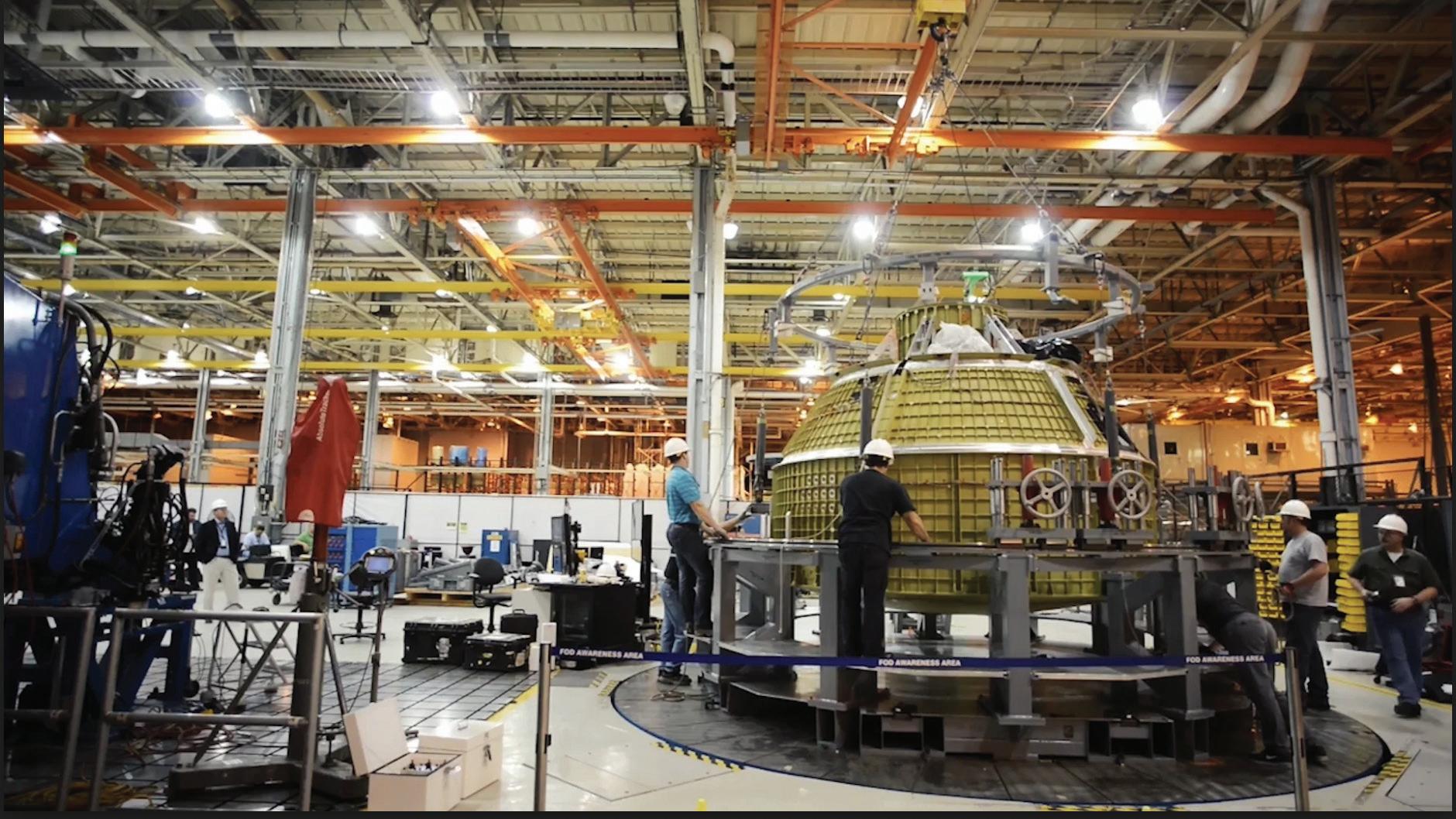

EXPOSING OBFUSCATION
DIVERSIONARY CLOUDS OF misinformation and the obfuscation by expert jargon is a challenge for every CEO who must deal with misguided industry critics, plaintiff attorneys and cynical media, often intended to confuse.
On the anniversary of the Russian invasion of Ukraine, a pair of attention-seeking Swiss academics produced a report claiming that 92.5 percent of Western multinationals didn’t exit Russia, despite public announcements. Their research had as many holes in it as Swiss cheese. But major media outlets never scrutinized the claims. This played right into President Putin’s propaganda mission to undermine Western unity in support of Ukraine. The initially concealed Swiss data showed that most of the research was not on Western multinationals but on Russian-owned, Russian-based companies—which, of course, did not pull out of Russia. Plus, it was padded with hundreds of individuals, including Putin’s oligarch pals, mislabeled as multinational corporations. Missing were hundreds of the largest genuine multinational corporations.
Divide and Distract
Questions were countered with tidal waves of diversionary statistical gibberish and hostile letters from lawyers defending the fraudsters. This was the same method now-convicted felon Elizabeth Holmes used in her massive Theranos biotech fraud—confusing media critics with hip-tech diversionary doublespeak while threatening whistleblowers with libel and hiding under the protective cover of uninformed credible endorsements by prominent politicians and venture capitalists.
In a self-critical 2018 CBS 60 Minutes piece reflecting on getting fooled by Holmes for their glowing 2015 profile of Theranos and its CEO, correspondent Nora O’Donnell confessed that Holmes had refused to explain how the company’s technology worked. When O’Donnell later asked Holmes about critics who insisted that a drop was simply
not enough blood to perform all the tests she claimed, Holmes dodged the question, responding that “every time you create something new, there should be questions. And to me that’s a sign that you’ve actually done something that is transformative.”
Muddle and Misinform
Gibberish allowed the JPMorgan 2012 “London Whale” trading scandal that caused $6.2 billion in losses and $1 billion in penalties. Floyd Norris of The New York Times revealed that the reckless trader sought permission, but no bosses understood his recommendation:
“sell the forward spread and buy protection on the tightening move,” “use indices and add to existing position,” “go long risk on some belly tranches especially where defaults may realize” and “buy protection on HY and Xover in rallies and turn the position over to monetize volatility.”
The prevention of such manipulation is possible with backbone. First, challenge doubletalk. President Richard Nixon’s press secretary, Ron Ziegler, was infamous for such doubletalk. In 1971, when evading congressional inquiry over whether the U.S. was about to invade Lao, he stated, “The president is aware of what is going on in Southeast Asia. That is not to say anything is going on in Southeast Asia.” In fact, one convoluted statement earned him a 1974 satirical award from the Committee on Public Doublespeak of the National Council of Teachers of English.
Second, do not be intimidated by technical jargon. Former Fed chief Alan Greenspan was a master of obfuscation, spieling clause-ridden, run-on sentences seemingly designed to make his position impossible for anyone to decipher. After each speech, headlines trumpeted opposite messages, providing Greenspan with cover from ever being held accountable for getting things wrong.
Third, have confidence that you are not the village idiot when asking a question. Fraudsters seek to make you feel intimidated. Call their bluff. CE

18 / CHIEFEXECUTIVE.NET / SPRING 2023 LEADERS
ON LEADERSHIP \ JEFFREY
Jeffrey Sonnenfeld is senior associate dean, leadership studies, Lester Crown professor in management practice at Yale School of Management, president of the Yale Chief Executive Leadership Institute and author of The Hero’s Farewell (Oxford University Press, 1988). Follow him on Twitter @JeffSonnenfeld.
SONNENFELD
Watch out for diversionary doublespeak that clouds reality.


Build your business with the best and discover our culture of unrivaled performance. READY TO THRIVE? Top 10 City To Move To For Diversity (U.S.) #1 City in Texas to do Business 2x the National Average of Tech Talent friscoedc.com WHAT IS A CULTURE OF UNRIVALED PERFORMANCE? • A GROWTH MINDSET THAT NURTURES INGENUITY • BARRIER DEFYING LEADERSHIP • TECHNOLOGY DRIVEN CREATIVITY • FIELDS TREAD BY CHAMPIONS • SPACES THAT GENERATE CULTURAL WAVES
ART THAT INSPIRES IDEAS
•
MADE IN THE U.S.A.
Resiliency, proximity to the mainland and tax incentives make Puerto Rico an ideal home for U.S. manufacturers looking to reshore.
AS IT DID FOR SO MANY COMPANIES
around the globe, the pandemic fast became an opportunity for logistics company Prime Air to prove its mettle. When Covid descended, Prime Air— which offers transport services, storage and delivery of freight worldwide and emergency shipments for the pharmaceutical and medical device industries— suddenly found itself facing tsunami-like headwinds.
“There were so many challenges in the system we had to overcome,” recalls Iris Vincent, president of Prime Air. One of those was the overnight disappearance of international routes for freighters as a result of the consumer travel shutdown. At the same time, one of the over-thecounter medications used to treat Covid was being manufactured primarily in Puerto Rico, and demand was skyrocketing. “That product used to be handled via ocean, and with Covid, all of a sudden, the same amount of medication that they used to ship via ocean, they had to start shipping via air,” she says.
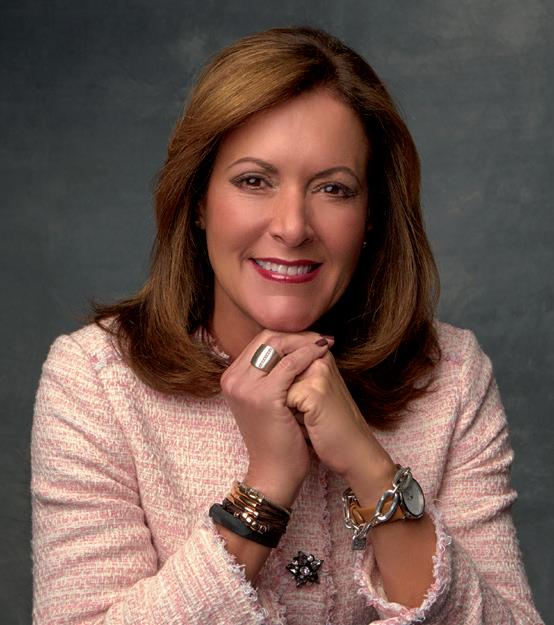
In order to maintain consistency on various routes, the Prime Air team was challenged to come up with alternatives for moving freight—from new combinations of ocean and air shipments to passenger airlines willing to do cargo flights to daily private charters.
“At some point, it felt like we were almost converting ourselves into an airline,” says Gabriel Vincent, director of operations—and he’s only half kidding. He recalls one of the more creative steps they took: locating an available 777 passenger aircraft in Bangkok, arranging a charter and bringing it into San Juan to load up the belly with cargo in order to get product shipped on time.
Ultimately, it was through a combination of creativity, tenacity and, in no small part the location of its headquarters that Prime Air was able to not only
“Retention is less expensive than attracting new talent, of course, so we’re focused on keeping our employees happy and as comfortable as possible so they can be ambassadors for the company with other potential employees.”
—Iris Vincent, President, Prime Air
survive but thrive through the pandemic. Resiliency is baked into Puerto Rico’s business culture and infrastructure. “Hurricanes, earthquakes, politics, we’ve had a little bit of everything down here,” says Tom Vincent, cofounder of the family-run business, noting that the adversity has made the island stronger. “You have to have some fast legwork to be able to adapt to that.” Puerto Rico has its own Business Emergency Operations Center, with all the various sectors of private industry participating to ensure a quick return to business.
The proof that it works? Hurricane Maria. “A day-and-a-half after Maria had passed, we were here at the airport receiving flights of goods coming in— although we were using private jets, [as the] scheduled airlines weren’t operating yet,” Vincent says. Today, companies around the island continue to participate in scenario planning to prepare for various emergencies—hurricanes, earthquakes and now, a pandemic. “There are a lot of tabletop exercises being done, so
we’ll be ready for whatever comes.”
Isla Frio Refrigeration has been running its facilities for two years and, so far, has experienced no interruption to business, says general manager Bismark Marquez. Isla Frio, which offers several storage units, including a 90,000-square-foot space with temperatures ranging from -20°F to 65°F, has both a backup generator and a fully charged thermal energy storage (TES) system. When Hurricane Fiona came through last September and caused power outages, the backup system was able to keep facility temperatures stable. Weather, says Marquez, “has not been a drawback for us.”
Tapping a Robust Talent Pipeline
On the flip side, the year-round balmy climate is a plus for both companies reshoring and employees choosing to return to Puerto Rico from the mainland. Marquez shares that a candidate he is currently considering for a warehouse supervisor position fits that profile. “He was born here, but has been living in Missouri and wants to return after many years of living on the mainland,” he says. “It’s partly cost of living, and also that it’s like summer here all year long.”
The influx of returnees adds to an already robust pool of top talent. The University of Puerto Rico–Mayagüez, one of the island’s 80 institutions of higher learning, is the leading producer of scientists and engineers for NASA. Half of all university graduates in Puerto Rico hold a STEM degree, outpacing the national average by 20 percent, and most are bilingual. Puerto Rico also claims the second-largest concentration of women engineers in the country and ranks sixth in the world in terms of availability of scientists and engineers.
While Prime Air regularly recruits externally—and grew its head count by
THOUGHT LEADERSHIP PROVIDED BY INVEST PUERTO RICO
10 percent over the past three years— they also seek to retain employees through a culture of caring and support, says Iris Vincent. “Retention is less expensive than attracting new talent, of course, so we’re focused on keeping our employees happy and as comfortable as possible so they can be ambassadors for the company with other potential employees.”
That includes supporting additional education and training, says Tom Vincent. “If one of our employees wants to advance in their career by getting additional credits in studies, we highly promote that because we want to see people grow from within more than going out to recruit.” The supportive culture extends to employees’ families as well. When hurricane season approaches, the company offers a care package to every employee with non-perishable food, bottled water and canned goods says Vincent. “Because if we don’t look out for the employee’s families as well as the employee, they won’t be able to come to work.”
“Made in America”
As the reshoring trend continues unabated—American companies reshored about 350,000 jobs in 2022, compared with 260,000 the prior year, according to Deloitte—manufacturers are looking more closely at this U.S. territory nestled in the Caribbean, which offers some significant advantages.
First off, the Puerto Rico Incentives Code, or Act 60 as it’s commonly known, offers substantial tax benefits: a 4 percent flat corporate tax rate, 100 percent tax exemption on capital gains, 75 percent
exemption on property tax and up to 50 percent back in tradeable tax credits on R&D expenditures. “That’s in addition to other municipality exemptions for manufacturing,” says Rafael Perez, senior business development director for Invest Puerto Rico, the island’s official business attraction organization.
Production costs for manufacturers are typically lower in Puerto Rico, Marquez
island is home to more than 80 manufacturing facilities operated by some of the largest drug makers, including Amgen, Johnson & Johnson, Pfizer, Becton Dickinson, Medtronic, Boston Scientific and GlaxoSmithKline, among other international players. Puerto Rico is currently the largest exporter of biopharmaceuticals in the U.S.—totaling more than $50 billion—and half of the territory’s $106 billion total GDP comes from manufacturing (the majority of that from pharma and medical devices).
notes, adding that one more sizable advantage is proximity to the mainland. “Rather than having to wait 30 to 60 days in ocean transit time, it’s just three days to Jacksonville [Florida],” he says.
When the product arrives, he adds, it has that “Made in America” label, which is something consumers are increasingly valuing, according to a recent survey conducted by Retail Brew and the Harris Poll: 71 percent of respondents said they sought out products made in America, and nearly half said they’d be willing to pay 10–20 percent more for them. Three-quarters said it’s “very or somewhat important for brands to make their products in the U.S.”
And for manufacturers in the life science and medical device sectors, Puerto Rico offers an ecosystem into which new entrants can move. The
Growth in manufacturing and innovation on the island recently attracted a $2 million investment by Scale AI to turn part of the Port of Ponce into a “Smart Port Lab,” with hardware autonomy kits integrated into cranes; autonomous inspection systems; computer-assisted surveillance systems and digital-receipt registries that will track and monitor container movement. “That’s a signal of the transformation Puerto Rico is going through,” says Perez.
Prime Air has invested in new technology too, giving customers end-to-end visibility into the supply chain as well as an app to monitor the live temperatures and humidity of each warehouse at the San Juan Airport.
But advanced technology doesn’t mean sacrificing personal attention— particularly in Puerto Rico, where the culture is as high-touch as it is high-tech. “Our customers don’t get an answering machine when they call us—there’s always a person behind the phone or email,” says Steven Vincent, Prime Air’s director of business development. “We never treat them as just a number.”
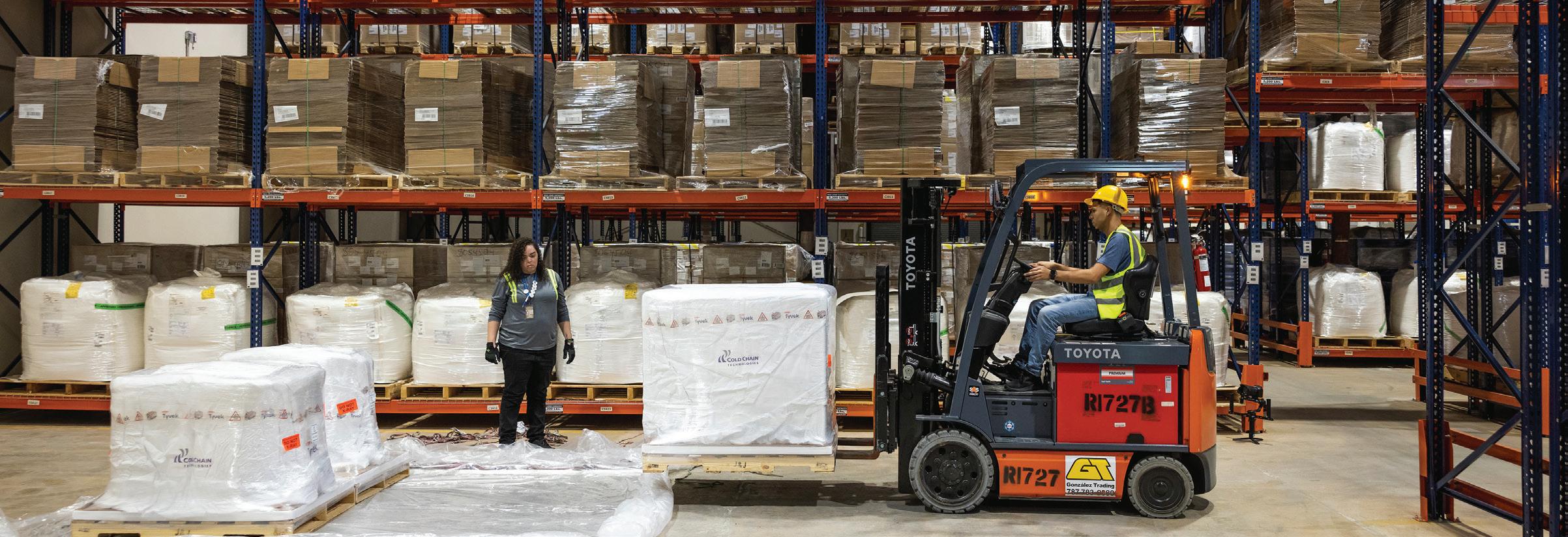
Today, companies around the island continue to participate in scenario planning to prepare for various emergencies— hurricanes, earthquakes and now, a pandemic. There are a lot of tabletop exercises being done to prepare for whatever comes.
‘THE PRIDE AND DIGNITY OF WORK’
For decades, Snap-on CEO Nick Pinchuk has extolled the virtues of domestic factories and the Americans who labor in them. On the cusp of a U.S. manufacturing renaissance, he shares his thoughts on facing the future—and what industrial leaders will need next.
INTERVIEW BY DAN BIGMAN
STALLED SUPPLY CHAINS AND GEOPOLITICAL TURMOIL are prompting many manufacturing CEOs to reverse course on the longstanding practice of moving manufacturing offshore. But not Nick Pinchuk, whose 103-year-old company has a tradition of making its products within the markets where they’re sold.
“Eighty percent of what we sell in America is made right here in America,” says Pinchuk, whose Kenosha, Wisconsin-based company produces high-end tools and equipment for transportation-industry technician. “Our plants in Europe make for Europe, our plants in Asia make for Asia.”
The focus on domestic manufacturing is partly driven by Snap-on’s business model, which centers around creating highly customized products, he explains. “We have a very broad product line and a very integrated factory situation. So, the idea of [lugging] 85,000 SKUs 10,000 miles is probably a nonstarter in a lot of situations.”
But Snap-on’s commitment to making products in America is also a reflection of Pinchuk’s long-held passion for the role high-tech manufacturing jobs play in the country’s economy and the livelihoods of Americans. His outspoken efforts in this arena are a big part of why Chief Executive will honor Pinchuk with its Manufacturing Leadership Award at the upcoming Smart Manufacturing Summit in Louisville, Kentucky, in June (Join us: chiefexecutive.net/
22 / CHIEFEXECUTIVE.NET / SPRING 2023
COVER STORY

smartmanufacturingsummit). In a recent conversation with Chief Executive’s Dan Bigman, Pinchuk pointed out that the past few years have bolstered his view that the work taking place in America’s factories is what has always been—and will continue to be—a competitive differentiator globally and offered his views on what the future holds for U.S. manufacturing. Excerpts of that discussion, edited for clarity and length, follow.
The U.S. is in a manufacturing renaissance right now. As someone who’s been doing business around the world for a long time, what’s your perspective on the geopolitical situation and the global outlook for manufacturing?
You said it correctly; the fulcrum of manufacturing today is the United States. This has been brought to a greater clarity because of the events of the last three years. It should have been evident before, but it certainly brought it to a new level of clarity. I do think there is a renaissance in the United States, and there’s some opposition to it. There are some second thoughts, or maybe some questions. Like me, some people think that manufacturing, the makers and fixers, people on farms, those are the most important things we have in America. And it’s at the very core of our strengths.
UK or Europe treated Covid was so much different than us. This had implications for the reliability of long supply chains—not to mention the cultural differences that you see in Russia and China today, where the bonds of commerce weren’t strong enough to hold the centrifugal forces associated with nationalism. And so all that leads to an idea that the U.S. is going to become more and more prominent in manufacturing.
I have seen the trajectory of this over time. When I think back to the ’70s, when you had high inflation and then the wageprice spiral, people started to say, “What am I going to do about this wage-price spiral?” People started to outsource to other countries. You can see the drop in manufacturing, the inflection point in manufacturing jobs in the early ’80s. We outsourced to create goods for our population that would be affordable even in a time of wage-price spiraling.
2023
Smart Manufacturing Summit
JUNE 20-21, 2023
LOUISVILLE KY
Join your peers for two powerful days of factory tours and speakers, including Nick Pinchuk and top executives from GE Appliances, Schneider Electric, Enpower, the National Association of Manufacturers and more.
What’s happened over the last three years with the supply chain interruptions and the rise in nationalism in a number of different avatars across the globe has made people realize that perhaps the models they had in their minds are no longer functional, if they were ever really functional in terms of an ongoing longer-term view of the world. A quick way to say this is the world may not be flat anymore.
JOIN US: ChiefExecutive.net/ SmartManufacturingSummit
You’re seeing that, under the pressure of Covid, different cultures reacted differently. We see it in terms of how the way China, Canada, the
As time went on, the essence of competition associated with that had to do with the efficiency of the supply chain, the rise in studying of supply chains at various universities. We built these huge supply chains that were like 20-lane highways where the cars went 200 miles an hour. The problem is micro-viscosities—it slows those lanes down quite dramatically. I remember when I was in the army, I was at this arsenal and we had this great howitzer that had been machined to very, very tight tolerances. We were demonstrating to this British general how fast it would fire and how accurate and so on. This guy bends down, takes a handful of dirt, throws it into the breech and says, “Now let me see it fire.” The world of globalization built around this supply chain created a vulnerability that Covid exposed.
In light of this, how are you advising your leadership to think differently?
In terms of the United States, there’s a clash of economic visions in America where some people think the United States should be an economy of thought as opposed to an economy of creation, driven by the thinkers as opposed to the makers and fixers. We think it’s been proven that America’s strength is in the makers and fixers. Ever ask yourself,
24 / CHIEFEXECUTIVE.NET / SPRING 2023
why is it America has been ascendant all these years versus all the countries of the northern hemisphere, North and South America, over the Western Hemisphere?
David Landes answers that question in The Wealth and Poverty of Nations. He says the geographics of North America, particularly the United States, didn’t allow them to grow enough product, enough crops to generate enough cash to send back to Europe to get what they needed. So, they had to figure out how to make and fix things here.
The evolution of that middle class, the makers and fixers, is what has driven our country from almost its very beginning. There are a lot of examples of this in the Erie Canal and the transcontinental railroad and so on. The makers and fixers transformed this continent. So you look at that and you say, “Gee, that’s the basis for our going forward.” It is our advantage, millions of people who can make and fix things. We want to nurture that.
Even when the economy was a bit more slack, we had hundreds of thousands of open jobs in manufacturing, and that continues to persist. Why?
Two reasons. The first is about skills. The schools are not educating the American workforce in the skills that are needed by manufacturers. One of the things manufacturers have to do is work to mash the skills that are being taught in the community colleges and the technical programs in the high schools to exactly what they want. There’s a way to do this. Part of it is education and business partnerships. We’ve tried to do this. Snap-on, for example, has something called Snap-on certification programs where we go to schools and we give them a curriculum and say, “Hey, if you teach your students how to handle a multimeter or a diagnostic unit or a jack or a torque wrench in this way, we’ll certify them as being ready for industry.”
We have 732 schools that are like that. We’ve had 275,000 students get certifications, 425,000 certifications awarded. But that’s just the tip of the iceberg. We need to do more of that. We need to match the
Nicholas T. Pinchuk
Chairman and CEO, Snap-on BOARDS: Director, Columbus McKinnon
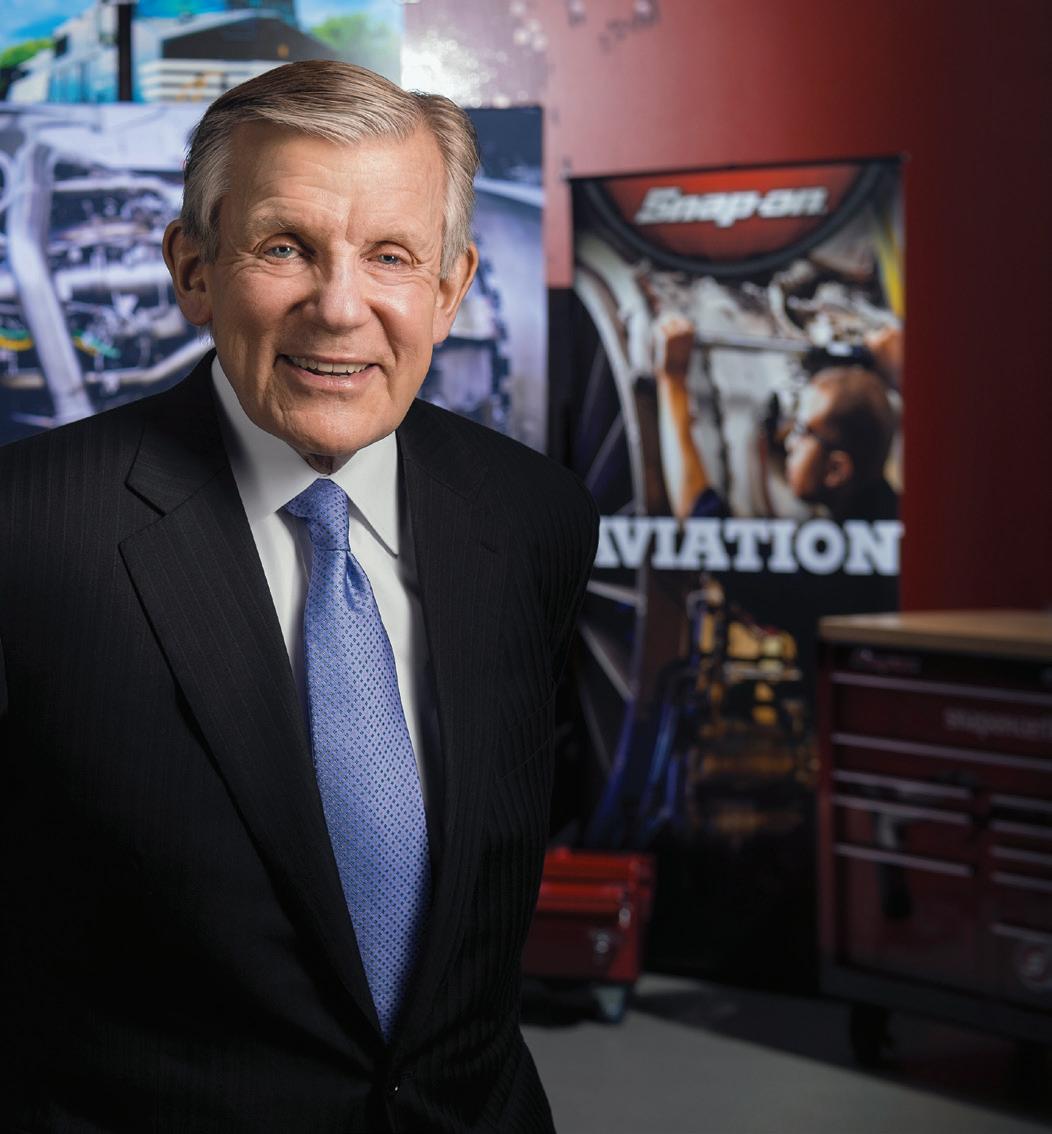
BOARD OF TRUSTEES: The Manufacturers’ Alliance, Carthage College
MILITARY SERVICE: Vietnam War veteran; Captain, U.S. Army
AWARDS: National Icon Award, National Association of Manufacturers
EDUCATION: Master and B.S., Rensselaer Polytechnic Institute; MBA, Harvard Business School
skills. It’s not as easy as you might think. I once gave a speech to a bunch of educators, and they were looking at me like, “Who’s this business guy telling us what to do?” So that’s something the business needs to work on.
Some of the cultural gulf may come out of the ’70s and ’80s. When manufacturing went offshore, a lot of people told their kids, “You don’t want a factory job because it’s not stable.” How does manufacturing overcome that? Look, this applies to car mechanics and welders and a whole bunch of other people who I would say deploy technical skills. You said it correctly. Over the years, we have lost respect for the dignity of work. There are reasons for this rooted in what you said about the disenfranchisement of some people in manufacturing and so on.
But today, it’s worse than that. We view the people, the young people who enlist in manufacturing as having signed up for the consolation prize of our society. It’s almost like in [Aldous] Huxley terms, they are the gamma minuses. If you talk to an audience in some urban environment and you tell
CEO MAGAZINE / SPRING 2023 / 25
them about manufacturing, they will look at you with incredulity until you say, “How would you feel if your son, daughter, niece or nephew told you they were going to be a welder in a factory?” And usually, you can hear a pin drop in the room because they know what they think. Those jobs are what other people’s kids do. Yet, in fact, these jobs have the ability to keep your family warm and safe and dry, and there is pride in dignity in factories across this country. And it’s demonstrated in a bunch of things.
Look back to World War II, read Freedom’s Forge by Arthur Herman or Engineers of Victory by Paul Kennedy from Yale. And he basically says, “Look, we have brave people in great generals, Eisenhower and Bradley. In World War II, we had soldiers who risked their lives. But in fact, if you looked at the numbers, the number of planes we’ve produced in the factories of the Midwest just in one year, it’s triple the number that the axis countries produced in four years.” If you look at that, you realized that the makers and fixers created the industrial substrate in World War II that allowed us to win the one war we could not afford to lose.
In the last three years, we’ve been at war again, not with tanks as weapons, or planes, but with things like masking and distancing and sheltering. And through it all, manufacturers kept working, keeping our society from disintegrating while we engaged and defeated Covid.
They’re American heroes. Fundamentally, we have a recent and proximate demonstration of the necessity of manufacturers. I talked to a group of professors and public health people, and they asked me, “Are your factories working?” I said, “Yes. Our factories never closed.” I never left. The core people here never left because the factory workers were working all through
Covid, and the reason was that critical mobility was important in our case. I said to these people, “Did you have dinner last night? Did you order from Amazon? How did you think that happened?” If you ordered from Amazon, that was delivered by a truck driver who couldn’t work from home, loaded by a warehouse worker who couldn’t work from home. That truck was serviced by a mechanic who couldn’t work from home. And the product was produced by a manufacturing worker who couldn’t work from home.
These are the people who kept us from exploding during Covid. They are American heroes, and this is a story that can bring people back. The National Association of Manufacturers says it: 90 percent of the people say manufacturers are important. Only 30 percent want their kids to be manufacturers. But they’re great jobs, and they deserve our respect and dignity—and they have it in Snap-on’s factories. So, this is part of what we need to do. We need [those numbers] to match, but also as manufacturers, we need to be wary that we have a PR problem, and we need to market.
So, what should manufacturing CEOs who are struggling to hire do?
There are two pieces. First and foremost, manufacturers need to address their people as if they are heroes. Emphasize the essential nature of their task, and understand that working is not just about a job, it’s not even just a career, it’s a life. People want to know that they make a difference, and manufacturers do make a difference. People who run manufacturing companies can impress that upon their people. Around here at Snap-on, that’s one of the things we try to do.
Second, one of the disadvantages of saying that your people are important or essential is that on occasion you have to act like it. So during Covid, we didn’t lay anybody off. We spent so much time nurturing them, training them, getting them to be capable. Why would we lay them off? So, that’s part of it. One, talk the walk. Just tell people how important they are. Two, walk the talk and treat them like they’re important. This may seem
26 / CHIEFEXECUTIVE.NET / SPRING 2023
“In every one of our facilities, we have someone whose job it is exclusively to urge their colleagues on every day to figure out ways to improve.”
like moralizing, but I don’t think it is. It’s essential.
How do you make sure that the passion that you have for manufacturing and the messaging that you’re talking about carries through to your managers?
We don’t train them. We enlist them in that idea. Every year, for example, we’ll have a video that goes to all our franchisees at our franchisee conference. We never fail to make sure it emphasizes how important our people are. After Covid, the video went like this: “Let me tell you of a people essential to the serious and unique to the world, standing firm against the threat, preserving all we know amid the gloom. You are Snap-on, and you are those people.” We do a version of that all the time. Those are the kinds of things you need to do from the top all the way down, different words from different people. But the concept is a constant.
You mentioned having 85,000 SKUs. Talk about managing and leading a business as complex as Snap-on. Complexity is the wave of the future in manufacturing, more and more customization. That’s how we can exist in America. Now, everybody won’t view it that way, but this is part of the whole idea about technology coming, about the Paul Reveres out there saying, “The robots are coming, the robots are coming!” The robots are coming, but the robots will do more of the standardized tasks, and you need people capable of handling the non-standard work—when you have a changeover, when the line breaks down, when you can’t deliver everything and you need to get something else.

The fundamental characteristic of the people we recruit is curiosity. We like people to say, “Why, why, why?” We think this is the characteristic that is ascendant
in any situation, particularly in a complex situation. The other thing is, we’re not conflicted. Some people get conflicted about complexity, see it as a problem, something to be eradicated, but we see it as an advantage that’s at the core of our business.
Our principal value-creating mechanism is not rooted in a particular industry. It’s not rooted in a particular technology. It’s not rooted in a particular product line. It’s rooted in the ideas to understand a critical problem and solve it. And this creates a huge range of products.
Complexity is our advantage, so we nurture it. But you need to have curious people who can fill in and manage the technology, who can deal with adjustment. Then you need to have the process that will generate those products through observation. Finally, you need to have the idea that you’re going to continually improve to be able to manage and blunt the cost inherent in that. So, we have a process called rapid continuous improvement. It’s in all of our factories. It focuses on cost reduction, but mostly flexibility, so we can manage the complexity.
CEO MAGAZINE / SPRING 2023 / 27
Bringing tech to toolboxes, Snapon’s tool tracking system uses digital cameras, mirrors and a touchscreen display to track tools.
In every one of our facilities, we have someone whose job it is exclusively to urge their colleagues on every day to figure out ways to improve. And several dozen times a year, we get together in plants all around the world with Japanese consultants, people who were with Toyota at the beginning on Kaizen or RCI, to solve some particularly thorny problems. And we bring people from all over the company to work on that in that particular factory.
So, one, we solve a problem, and two, we irrigate those methods demonstrated or developed in that effort to the rest of the company. Then, three, my direct management team once a year spends a week on the factory floor working side-by-side to solve a problem. I did this just recently. Some of our people would say it takes the factory six months to recover. But we do that to make sure we understand it, and to demonstrate to everyone that it’s important.
Finally, once a year, we have people from all teams, from the best teams from all over the world, come together in what we call the RCI conference, where they display their wares. You have our top management team and the other participants walk around and understand what all these 30 or 40 teams did and judge them. The winner gets a traveling trophy, a trophy they can keep, and $10,000 to throw a party.
How do you use technology to further your goals and strategies?
We have 85,000 SKUs. We bring out thousands of new products every year. And sometimes the biggest barriers to new products are prototype making. So, we use 3D printing and direct-laser metal sintering procedures and processes is to cut through the prototyping time and reduce the cost
of prototyping. Those particular technologies have asymmetrically enabled a new product-producing company like Snap-on, because they’ve cut out time and cost, and a lot of these new products helped us a lot. There are a whole bunch of other things, CAD/CAM and things like Big Data. So, we’re not all about hard tools these days when you go to a shop.
How did you get this passion for manufacturing?
When I was young, I lived in a lower-middle-class neighborhood, the kind of place where you didn’t need anything, but you didn’t have much—not so bad living, but not excessive. My father worked in a factory. He ended up rising to be a plant manager. So, I’d go to work with him. I knew the factory guys, and I knew the guys around the plant. I spent a lot of time there, and I ended up at the Ford Motor Company. That gave me a better appreciation for it.
Then I went to Asia in ’87, and I came back in ’97. What you saw there was an appreciation for the power of people as they became enabled. You could see the Chinese, the Vietnamese, the Indians and the Indonesians as they got better educated, had better schools and better tools, how much more of a societal economic power they became. That’s what convinced me that manufacturing is at the core of everything.
In those days, there weren’t that many educated people in Asia. Education was just starting to expand at a lot of different levels. So you held on to your people for dear life. Sometimes in America, even in manufacturing, you think, “Well, I can let people go now, and I’ll hire them next year.” In Asia, you didn’t believe that. That showed me how important it was, how important a resource your people really are. Those things shaped out my view.
What do manufacturing leaders need to be and to become in the decade ahead in order to be successful in your mind? At the basic level, they need curiosity. As I said before, we believe this is the ascended virtue. You keep asking, “Why, why, why?” You don’t get overcome by new stuff. You
28 / CHIEFEXECUTIVE.NET / SPRING 2023
“Henry Ford was a brilliant guy... but he couldn’t have brought his idea to fruition without tens of thousands of people who migrated to Michigan and to Detroit and helped him enable or establish the auto industry.”

understand why things work and things evolve a little bit. You can go with it. That’s very important. You have to be able to pay attention to detail. You may think this to be trivial, but I’m not so sure. If you’re a manufacturer, consider this situation. You’re in school, and you’re having a test. It’s the end of the semester. If you go in, you take the test and you hand in a book and come back a week later and the professor says, “99 percent,” you’re ecstatic, right? But now let’s shift gears. You pick up a new car, you’re proud of it. You drive away, and you realize that the manufacturer got the parts 99 percent right. That means there are 300 defective parts. So, in our education system, 99 percent is an A. In manufacturing, it’s an F. Do you see what I mean? So, you need to know those things at a core level. And you need to be flexible. In my world, we drive people to standardized work, but we know there’ll be differences. We know we’ll have quick changeovers. Being flexible is important. Whether you’re CEO
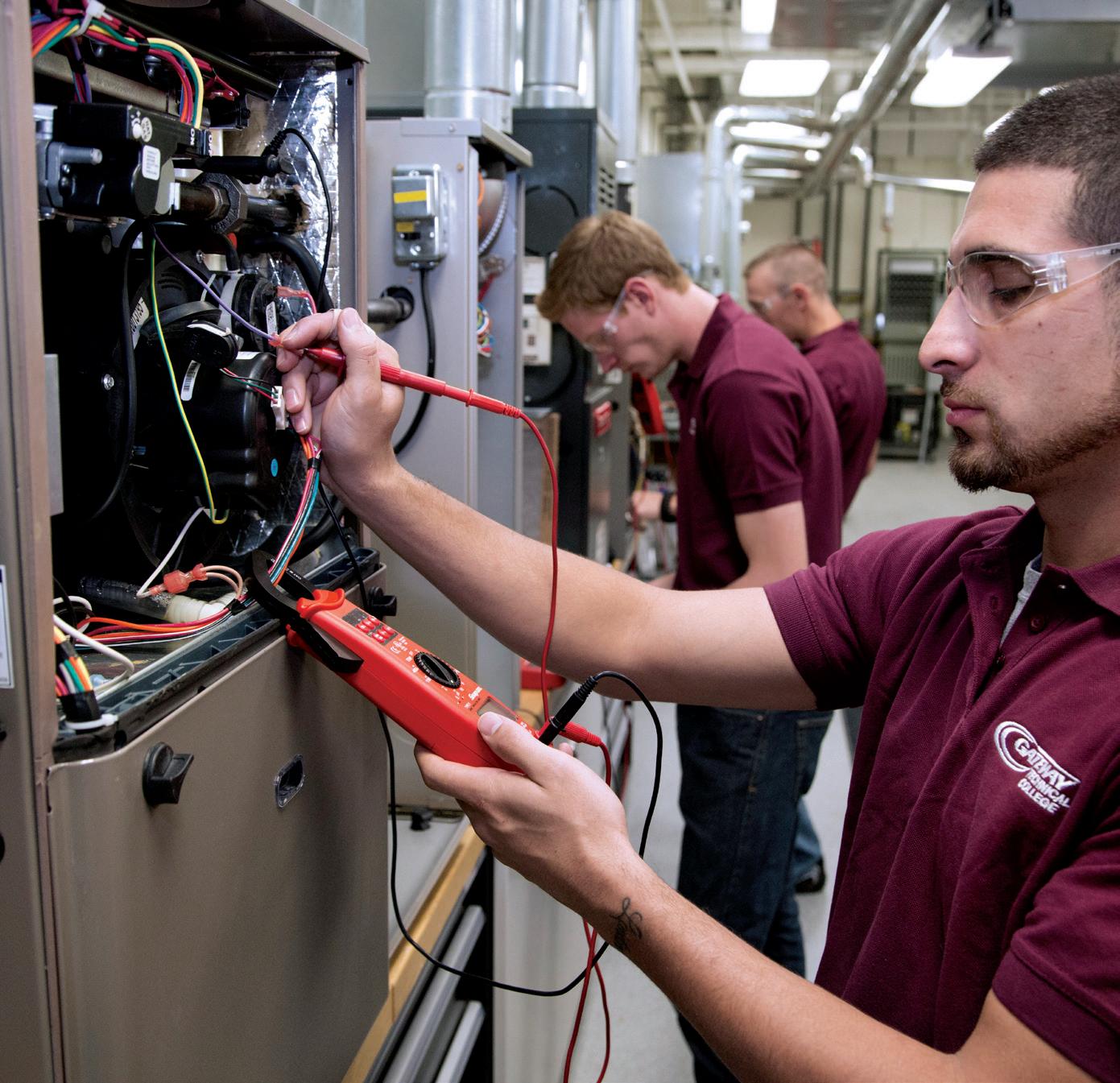
or a line supervisor, leadership is about belief. My job is simply about belief. It’s creating belief in the people around me in the efficacy of the strategy. In other words, it will succeed and it will provide them with what they need—the continual stability and ability to keep their families warm and safe and dry. I need to get them to believe in the people they’re working with, to understand how they’re in a special group, but also to recognize that they can count on and work with those people. But most important, I need to get them to believe that what they do makes a difference.
Snap-on’s a great company. I fell upstairs when I came here. We believe business and, in particular, manufacturing cannot be modeled, cannot be described in a framework. It’s too nonlinear. So, what we do is we expose our decision-making here at Snap-on to as broad a group of people as we can. For example, we have something called quarterly business reviews. They last a day for each division. We have people in a room, but we probably have 100 more watching on Zoom. Each day is a case, each hour is a different situation.
They learn positives and negatives in these things, and they enrich their category, their catalog of how things happen and the tone in which we talk about these things.
This is a tonal exercise and a business execution exercise. We [also] do this for board meetings. I want our people to learn. It’s a great broadcasting mechanism that, one, builds the library, and two, gives them the tone we’re trying to adopt. And if anything comes through in these meetings, it is respect for the pride and dignity of work. CE
30 / CHIEFEXECUTIVE.NET / SPRING 2023
Pinchuk is a strong advocate for developing high-tech— and high-income— skllls for not only his workforce but all blue-collar workers.














STRATEGY
UNLEASHING YOUR
AI ADVANTAGE
can—and
We
INTERVIEW BY DAN BIGMAN
Artificial intelligence is everywhere, doing just about everything. AI tools are predicting customer behavior, diagnosing patients, screening résumés, managing supply chains, responding to queries and fulfilling orders. They’re informing strategic decision-making by digesting and analyzing vast quantities of data with lightning speed. Chances are you’ve experienced firsthand the magic of generative AI creating images and textin seconds that are indistinguishable from human efforts.
Yet, amid these seemingly endless capabilities, exactly how companies can participate in this AI-fueled future, whether through incremental improvements or revolutionary transformation, can be difficult to pin down. For clarity, Chief Executive’s Dan Bigman spoke with AI thought leader Tom Davenport, author of 15 books on innovation and technology, two on analytics and artificial intelligence. The President’s distinguished professor of information technology and management at Babson College and a fellow of the MIT Center for Digital Business, Davenport weighed in on what CEOs need to understand now about the real-world future of AI in business. Some insights.

ChatGPT, Midjourney and other AI tools have really exploded. What’s your take on AI in business, how it’s accelerating and what you think it means?
Well, so far, ChatGPT and the other AI generative tools are not for what you call mission-critical applications. They are for writing marketing copy, blog posts and product descriptions, not the terribly important stuff. However, over the weekend I read that the company that owns Sports Illustrated is doing what’s called fine-tune training, where you train it on all of your content after it’s been trained on the entire Internet.
Then you can use it to write things that relate to everything you have written in the past. Before I was in AI, I did analytics, and before that I was a knowledge-management person. I think AI could be quite revolutionary for managing all the knowledge that the organization has accumulated and providing very easy access to it. I suppose it could also revolutionize
CEO MAGAZINE / SPRING 2023 / 33
What
can’t—artificial intelligence do for your company?
asked author and AI expert Tom Davenport to take us beyond the buzz for a pragmatic look at the real-world potential of the technology.
Tom Davenport is the author of All in on AI: How Smart Companies Win Big with Artificial Intelligence.
journalism. The Associated Press was doing automated reporting for a while, but that was for highly structured things. We used to say, “If you’re a feature writer, you’re safe.” Now I think regenerative stuff is more feature-oriented. It’s not very good at news, but it’s really good at features.
I saw the exact same story, and I thought that was so slick because if it’s all yours, you avoid the plagiarism issue. You already have it vetted and, theoretically, fact-checked. So it’s just reconstituting things at speed and scale.
Right. They’ve been publishing for decades, so why not mine the past? And Morgan Stanley is trying something similar. It’s still pretty experimental to take all of their investing advice that they have accumulated over the years, plus life-event advice to get better at matching investing to life events, and use that to fine-tune-train GPT-3. Then they’ll be able to either give customers direct access to that knowledge or, more likely, mediate it through their financial advisers.
You’ve written about this for a long time now. What do you tell leaders about the best way to think about AI long term and incorporate it into their strategy? It’s really important for senior executives to have some sense of what the different AI technologies are, what they’re good for and what stage of development they are in. Even Sam Altman of OpenAI says, “Don’t do anything important with ChatGPT.”
Yet, there are plenty of AI applications involving these generative tools or prediction-oriented tools, but there are much more business-oriented, prediction-oriented tools that will predict things like what offer customers will respond to, which employees will leave or what price they’re likely to accept. Those are not experimental. The ChatGPT stuff, people should definitely be experimenting with that, but they should be aware that:
A) AI gets things wrong quite frequently and in a very confident fashion. B) It’s not very good at some things, such as math. C) Chances are fairly good that somebody’s gonna sue you if you use a lot of this stuff. But everybody in the company ought to be experimenting with it to see what they could do and how it might make their jobs better.
So where do you think this takes companies in 5, 10 years? What should CEOs be doing to prepare?
Some of the companies I wrote about in my book are using AI to sort of change their strategy, enable new business models, really transform operations, not just improve them on the margins. The tendency with analytics and AI is to say, “Okay, we already make decisions, let’s make better ones, or, let’s use it to make our processes more efficient.” The survey research I’ve done with Deloitte suggests that those are the most common objectives sought, but if you’re a CEO, you ought to be thinking about what new business model is possible with this, or what entirely new products and services could you offer as a result?
The thing that was most interesting to me were these new organizational structures that companies were building that were sort of ecosystem-based rather than just their own company. For example, Airbus putting together an ecosystem of all the companies that fly Airbus aircraft and getting the customers all together to say, “Okay, how can we make these flights more efficient and make the maintenance processes better and share data?”
The best example of that in the world is Ping An in China, which has five different ecosystems, each powered by AI. They even have the smart-city ecosystem working with the healthcare ecosystem sharing data across a variety of industry participants, in many cases competitors as well. They’re using that data to make better decisions, which makes the customers’ lives better. It’s just really a perfect sort of circular business model, in a sense: better data, more customers, better offerings, etc.
In a situation like that, how does the AI empower the business model?
A couple of ways. Take Airbus and a Japanese
34 / CHIEFEXECUTIVE.NET / SPRING 2023
“Uber, Airbnb and even Google couldn’t exist without AI, but the fact that legacy companies can do it as well is quite exciting.”
company called Sompo International, the second-biggest insurance company in Japan and the largest nursing home owner in Japan. They use it to integrate data. Data integration itself is not that exciting, but if every company gathers the information in different ways, you need AI to put it together. And there are all sorts of things you can do once you have that data. You can start to predict when plane engines need service or when a person in a nursing home is getting sick.
Once you have the data, you can start to add value to it in all sorts of ways—that’s AI. These sort of platform-based companies in the digital economy have been doing this for a while: Uber, Airbnb and even Google couldn’t exist without AI, but the fact that legacy companies can do it as well is quite exciting. But it puts a lot of weight on CEOs and senior leaders to say, “Okay, what are we not doing that we could do if we had all of this AI capability at our fingertips?”
How do you begin to imagine that kind of a thing if it’s outside your current competency?
It’s largely a matter of awareness, and you get awareness in most cases through education. So if I were a CEO, I’d say, “Okay, all my senior leaders and directors have to be educated on how AI works, what it can do, what it’s doing in other companies.” I’ve just been doing a program at MIT for the military, and they’re bringing in, including NATO, not just U.S., bringing in senior leaders in all of the military branches to... they basically spend a week learning about AI. I don’t know that many companies would take that much, but I don’t know how you get it otherwise. P&G has been sending a lot of its senior executives virtually to a Harvard executive education program. Various companies I know have started to do that, but a lot more haven’t yet.
What do you tell them when they show up and ask you, “What can this do and what can’t this do?”
It should be a lot more than spouting off about what AI is and so on. It needs to be very interactive, like, “Okay, here’s our strategy. How could that change? What have some other companies done in that regard?”
It’s sort of half typical education and half a consulting-oriented workshop to make that happen. In the military, obviously, the submarine people are going to have different questions than the Air Force people or the Space Force people. So if you have a company with a bunch of different business units, you’d probably want to have a lot of breakouts and separate conversations about it.
Is this about looking at business problems and seeing if there’s a new way of doing it? Or is the approach different, where it really is more blue-sky brainstorming?
The problem-solving approach, if you do it on a large enough scale, can certainly be transformational. Shell is using AI to totally transform how it inspects refineries and pipelines. It used to take something like six years to inspect all the piping in a refinery, and now they use drones and AI image recognition, and it’s about six days. Clearly that’s a dramatic transformation in how you can go about that particular part of the business. So there’s that, but there’s also the blue-sky part—what new business model could be made possible, and what should we be considering that we haven’t even thought about before?
We often think about the future based on metaphors about the past, but this seems to be on a different track.
A lot of AI is sort of analytics on steroids. But you’re right, some of the language-oriented stuff we’ve never really had before. We’ve never had anything that could compose a really great essay, blog post or product description without human involvement. And so we need to separate the things that are extensions of what we’ve done before from the things that weren’t possible at all in the past. That’s one of the things that’s gotten people so excited about ChatGPT. It’s still machine learning, it’s still prediction, but it feels like a completely different capability.
You spend all of your time on this. The rest of us probably spend 2 percent of our time on this. What do you see coming down the road?
CEO MAGAZINE / SPRING 2023 / 35
There probably are some things that nobody else thinks about, but we have plenty of work still to do with the things that we’re familiar with in terms of possibilities but haven’t really executed on yet. Clearly, we still have some work to do in using image recognition for driving purposes, but it’s been just around the corner for 40 years now—so, continued refinement. But everybody in a company needs to be thinking about what it will do. Fully autonomous vehicles, fully autonomous aircraft and fully autonomous lawn mowers and so on will clearly happen at some point. So a huge number of businesses will be changed by that capability.
There’s this company, CCC Intelligent Solutions, that’s been around for 40 or 50 years, and they knew the collateral value of cars, so that if you wreck your car, the insurance company knows how much to give you for it. The CEO was previously the CTO, and he had a pretty good sense that before long, people were going to be able to take high-resolution images with cell phone cameras, and you would be able to get AI-based image recognition. So about 10 years ago they started building the capability to allow you to take a photograph of your recently crashed car and get an immediate estimate for how much it would cost to fix it, if it’s not a huge amount of damage. It took that kind of long-term betting capability…. I mean, we can all now look back and say, sure, that was a no-brainer, but it wasn’t at the time.
What pitfalls do you see going forward with this, not in terms of societal, but where it goes wrong as people try to make the leap across the chasm here?
It’s the AI-human interface more than anything else. One is lack of ambition. People just do too much experimentation, and they don’t really deploy their various statistics
for what percentage of AI models actually get deployed into a production capability. I mean, on average, it’s probably 20 percent. I don’t know the exact right figure. It’s clearly not 100 percent because you should be experimenting and failing some, but 20 percent is a huge waste of economic value. So we need a plan for deployment. Deployment involves change in various aspects of the business. It means treating this increasingly as a product.
A lot of companies talk about data products as something that they should be trying to manage. They should put data product managers in place; that includes data analytics or AI, organizational change, ongoing management. Kroger was telling me the other day that when avian flu comes, the price of eggs goes up to six bucks a dozen. Our models weren’t predicting that, so we were not able to do effective planning. You’ve got to constantly monitor the models after you put them in place. And a product management structure does that very well. The smartest companies are starting to do that now. But a big part of that is the human interface. We’re not doing a very good job of training people on the frontline to use this effectively.
A lot of surveys show that people are saying, “Managers are not telling me what to expect, what I need to get better at.” It’s not easy to think about how a particular job will change. But people need some help in thinking about that issue, and probably some reassurance that we’re not here to eliminate your job. The only people who will lose their jobs to AI are those who refuse to work with AI, but people need to be hearing that message so they’re experimenting with ChatGPT. They’re not afraid of it.
More and more, we will see democratization of a lot of these capabilities. We’re always seeing a lot of low code, no code for typical business applications. There’s democratized data science now with automated machine learning, democratized automation. You can automate your own job with robotic process automation tools. We had elements of that before with Lean Six Sigma, people running around with yellow, green and black belts, but the automation
36 / CHIEFEXECUTIVE.NET / SPRING 2023
“The only people who will lose their jobs to AI are those who refuse to work with AI. People need to be hearing that message so they’re experimenting with ChatGPT.”
part will make a huge difference to that too. So it’s a new world a lot of organizations are facing here.
Given those dynamics, what do those at the top have to do to set the tone? What can CEOs do that brings about that success culturally?
They educate themselves. A great example is Piyush Gupta at DBS Bank. He told me his mentor had been John Reed at Citi, who was the first banker to get the importance of information and technology. So Piyush helped design their data strategy. They used this Amazon game involving Formula 1 to teach reinforcement learning. He said, “I wasn’t the best in the company, but I was in the top 100.” People really look to see, is the CEO participating in this?
He encouraged a lot of experimentation. He didn’t mind failure at first. They failed with IBM Watson. They engaged the National Research Foundation Singapore to do a couple of things that failed. But he was not deterred, he kept going. He opened up the purse strings to let people experiment for a while without much in the way of controls or returns expected. But then he said, “Okay, experimentation time is over. We need to make some money with this, and you need to say how much you’re going to make, and we’re going to track that carefully.”
So, he was just engaged in the whole process. And Githesh Ramamurthy at CCC was the same way. They know what’s going on in the organization. It’s like Jack Welch used to do with all the digitization and Six Sigma stuff. He’d call people up and say, “Well, why don’t you do this?” Keep the pressure on.
Much of the conversation after books like Superintelligence and others was about AI gone wrong and making sure that we are running AI and AI is not running us too much. Is that just a real fallacy that we shouldn’t even be concerned about?
I’m not personally worried about robot overlords killing us all. I try to rely on the data. All I’ve seen is augmentation, not
large-scale automation. If there’s been any automation, it’s been on the margins, a task here, a task there. Most people do more than one thing in their jobs. So I don’t see that on the immediate horizon if super intelligence or its equivalent comes along. My guess is it’s still a ways away. You and I will probably be dead by then, so let’s not worry about it too much.
What else should CEOs be aware of?
The kind of things that transcend industries that maybe the rest of us should be adopting?
I don’t think there’s any magic to it. It is just people at a very senior level looking around at the world and saying, it’s going to be very data-intensive in our industry if it’s not already. How do we use that data to make better decisions, create new strategies? I spoke to a guy at Morgan Stanley who looked at Netflix 12 years ago and said, “We should be doing the same thing with investments that Netflix is doing for movies.”
It took them quite a while, but now they have this great next-best-action system, and it’s very influential in their business, but it turns out what people really care about is that their financial adviser’s looking out for them. So yes, they sent out these AI-based ideas, but they also integrated it with a Salesforce CRM system to make sure that people heard from their financial advisers often about birthdays and hurricanes coming to your region and things of that nature. So, it’s going to be the mixture of the human touch and the AI touch for a really long time.
Any final thoughts as we send CEOs off into the great AI future?
There’s no shortage of learning resources out there. I probably get 25 newsletters a week on AI. You should be playing around with ChatGPT, Dall-E 2, Midjourney. It’s your duty. It used to be that as a director, you had to know something about accounting or compensation or whatever. Now you’re really not doing your duty if you’re not aware of what AI can bring to the table. CE
CEO MAGAZINE / SPRING 2023 / 37
AUTOMATE IT’S TIME TO
AMERICAN FACTORIES AND WAREHOUSES ARE undergoing an automation boom that was well on its way before the pandemic, was supercharged by the virus, spurred further by supply-chain debacles and generational labor shortages, and now is entering a new phase in which companies’ need to reshore industrial operations has become another driving force.
Sure, the arrival of ChatGPT has created existential questions for everyone from lawyers to artists to financial planners. But generative artificial intelligence is already insinuating its way onto the factory floor as well. Other hot areas of manufacturing and distribution automation include the creation of digital threads and “twins” for simulating and improving processes, and human-machine collaboration.
“This is a moment for real acceleration of automation,” says Asutosh Padhi, managing partner in North America for McKinsey. “There’s a felt need today, driven by talent shortages and investments in digital, that a lot of companies have done.”
Slim worker availability and high labor costs continue to dominate CEOs’ reasons for accelerating automation. A recent Chief Executive survey found that 51 percent of companies with more than $250 million in revenues are investing in automation to reduce the number of employees in the back office in response to rising wages, and 44 percent of those companies are doing the same in the plant.
AI is, of course, the leading edge of this phenomenon, both in generative and preexisting forms. It’s
entering factories and warehouses rapidly, especially in areas of input optimization, maintenance and relationships between product design and manufacturing execution, including greater customization.
“The industrial use of AI has drastically shifted how manufacturers approach, think about and execute business processes,” says Rachael Conrad, vice president and general manager of customer support and maintenance for Rockwell Automation. “Through the simplification and automation of data analysis, manufacturers can easily raise awareness to areas that need improvement.”
Vijay Sankaran, chief technology officer for Johnson Controls, says industry is “well beyond exploration of AI as a sort of useful capability. We’re at the point where AI is becoming embedded in solving problems for almost everything that we do. It’s quickly moving from experimentation to much more broadscale adoption.”
Machine learning, video analysis and other tools required for AI have been coming together for a while. The last pieces to fall in place are “the cloud and 5G,” says Suketo Gandhi, digital supply-chain leader at Kearney consultants. “You can suddenly raise the efficiency of individual workers and factories.”
Keeping machines going through process analysis, troubleshooting and predictive maintenance is one huge application area for AI, enabling factories to far exceed the capabilities and pace of humans alone. “Often, AI is able to use sensors to identify something the humans are hearing or seeing or smelling for when
38 / CHIEFEXECUTIVE.NET / SPRING 2023
Rising wages and a dearth of skilled workers are driving CEOs to push artificial intellegence and robotics ever deeper into their operations. Here’s what some of them are learning along the way.
TOOLBOX
BY CHIEF EXECUTIVE
that person adds the catalyst to a process,” says Alice Globus, CFO of industrial systems supplier Nanotronics, which has been providing AI to manufacturing clients for more than five years. “Also, if a valve is locked open, it could take a human process engineer hours to figure out where it is, whereas AI could immediately identify which valves and sub-processes need to be looked at.”
Also, AI-powered “recommendation engines” can plow through contingencies such as material shortages and machine faults. “The person getting the most daily value from this sort of AI is not a data scientist or even a manufacturing engineer, but the operator who is fine-tuning and making adjustments to a machine,” says Stephen Laaper, smart manufacturing leader for Deloitte consultants. “It helps them make the next best decision in the execution of their job: ‘Please choose A, B or C.’”
Predictive maintenance is another fast-growing area for industrial automation. “AI is starting to be built in, to help technicians monitor anomalies,” says Blake Griffin, senior analyst at Interact Analysis. “For a long time, you had to rely on subject-matter [human] expertise they developed over years and years. But now AI is a huge play in keeping equipment up and running and healthy, reducing unplanned downtime.”
Human-machine collaboration in general is a strong theme running through new automation efforts, including “collaborative” robots that work alongside and in some cases even around human workers. Collaborative robots are “easier to set up, cost less, are safe and don’t require as much floor space or the same level of engineering expertise” as fully autonomous robots, notes Jeff Burnstein, president of the Association for Advancing Automation. They also offer a path for small and medium-size companies to ease into
CLIMATE CONTROL SYSTEMS PROVIDER KEEPING AN AI EYE ON FACILITIES
Vijay
Sankaran, Chief Technology Officer Johnson Controls • Glendale, Wisconsin

We’re at a point where AI is becoming embedded in solving problems for almost everything we do. For example, we use generative AI for a training set around our internal technical documentation that is pretty game-changing in terms of technicians asking how to fix things. It’s sort of like YouTube [instructional] videos.
Under our OpenBlue system with our clients, we’re connected and constantly seeing data and using AI algorithms to monitor signals and faults from chillers, and predicting when they might have an issue so we can safely shut them down. We use deep neural networks and image recognition, for example, to identify flares from client smokestacks to indicate particular warning signs about the health of that facility.
In our manufacturing, we use AI to help meet our net zero emissions targets, starting with eight of our facilities to baseline our carbon emissions and leverage AI to make adjustments in real time based on things happening in that facility or different external environmental conditions.
MAKER OF FOOD-PROCESSING EQUIPMENT KEEPING HUMANS IN THE LOOP
Daniel Voit, CEO Blentech • Santa Rosa, California

On the production floor, you want to have human judgment at critical points. You need to be able to parse where a human needs to make a decision and break up those activities into automation, decision, automation. You can automate one or two processes without automating the whole line.
For example, with our equipment, some customers will want to make a mirepoix or a French onion soup or sauce, and those processes are inherently difficult to automate. As you change from one product to another, you need a configurable framework for introducing automation as well as human steps. It may require human oversight to a certain point and, after that, to take over with automation.
CEO MAGAZINE / SPRING 2023 / 39
robotics applications.
For instance, in the early days of robot installation in automotive plants, it was risky to life and limb to assume the machines could work in physical concert with people. But in one of today’s newest assembly plants, the factory in Dearborn, Michigan, where Ford builds the new F-150 Lightning all-electric pickup truck, human-robot collaboration, in an intricate ballet weaving around the truck—is a staple of the process and a huge efficiency boost.
Yet in a different way, humans also remain a big impediment for the spread of AI. “More sophisticated automation requires more technical resources,” Laaper says. “But we’re tapping into an increasingly scarce skill set of robotic engineers and technicians.”
Costs of implementation remain another formidable obstacle to continued momentum for industrial automation, including initial affordability and generating an acceptable return on investment.
This is a problem especially for smaller manufacturers. The Chief Executive survey found that only 28 percent of companies with under $10 million in revenues are investing in tech and automation on the front lines, compared with 50 percent of companies with $1 billion or more in revenues.
And in a survey by Visual Components, 43 percent of manufacturing decision-makers said between 21 percent and 60 percent of their operations are being held back from being updated with new technologies due to continued cost pressures.
Still, Christian Hasenoehrl, a global leader for consumer and industrial accounts at the Korn Ferry executive-search firm, says CEOs also are haunted by one thought. “If your output is only at 95 percent or 90 percent of what you’re capable of,” he says, “you can be leaving billions of dollars on the table if you don’t automate.”
MAKER OF COMMERCIAL SUN-SHADING PRODUCTS WORKING TOWARD ROBOTIC WELDING
Jeff Cash, CEO, Architectural Fabrication Fort Worth, Texas

We started with a Salesforce ecosystem in 2016, trying to create a digital thread throughout the entirety of our projects and automated systems as a guiding path through our tactical, day-to-day processes. It allows people to elevate and focus on more complex problems.
Now we also are adding Solidworks 3-D modeling and feeding all of that into our ERP. It automatically tells the purchasing staff what to order; we’re automating a lot of manual data entry and calculations.
We’re also working on implementing a design-automation tool that will allow our customers to put in simple parameters around our product and will automatically generate documents, sales, orders and work orders.
On the floor, we have evaluated robotic welding, but the ROI hasn’t been there for us yet. The costs would have to come down on some of that equipment. But we’re raising wages in the skilled labor market, and as costs continue to escalate, [robotics] start to make more sense.
DIVERSIFIED CONTRACT MANUFACTURER TRIMMING COSTS THROUGH AI CALLS
Paul Baldassari, Executive Vice President of Worldwide Operations, Flex • Singapore
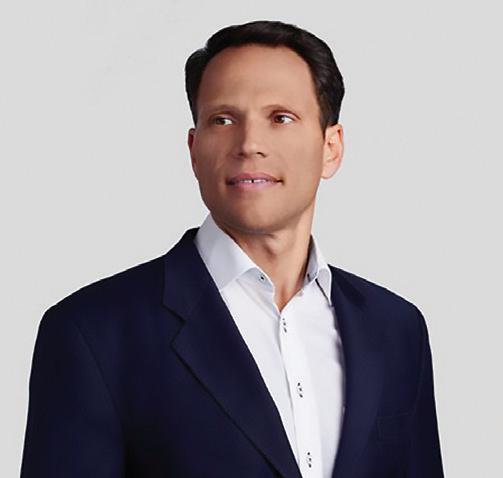
In our hundreds of plants, we are building many use cases for AI. For instance, in our large factory in Guadalajara, Mexico, 10 percent of indicated failures weren’t actually failures. People had to check each “failure” and manually override it. But with an AI application, we only have a .02 percent false-failure rate. And now one person can actually monitor multiple lines and focus on the hard cases. A job that was boring and repetitive has become a higher-skilled job that requires more flexibility and a more innovative human mindset.
Also, in the past, we ran preventive maintenance on laser cutters and pulled out a unit every couple of hours. Now, with an AI solution, we can just see how much electricity has been used by that unit and whether we need to do maintenance or not. That also detects errors we may miss during regularly scheduled maintenance. So we save on spare parts and increase line reliability, up time and product quality.
40 / CHIEFEXECUTIVE.NET / SPRING 2023
APPLICATION CLOSE DATE: June 15, 2023

PATRIOTS IN BUSINESS AWARD
Chief Executive magazine, in partnership with Thayer Leadership at West Point, a leader in applying military leadership principles to corporate leader development, announced the 6th Annual Patriots in Business Award, honoring the Best Companies with Veteran & Military Initiatives.

This award recognizes outstanding businesses that lead our nation in supporting active-duty military members, veterans and their families and exemplify the values of Duty, Honor and Country through their business practices and throughout their community and industry.

For additional questions, contact: PatriotsAward@thayerleadership.com
Congratulations to our 2022 Patriots in Business Award Honorees:
SUBMIT A NOMINATION: ChiefExecutive.net/PatriotsInBusiness PATRIOTS IN BUSINESS 2023 BEST COMPANIES WITH MILITARY AND VETERAN INITIATIVES IN PARTNERSHIP WITH CALL FOR NOMINATIONS
MAKER OF MODULAR BUILDINGS DESIGNING BUILDINGS TO FIT
Suchit Punnose, CEO
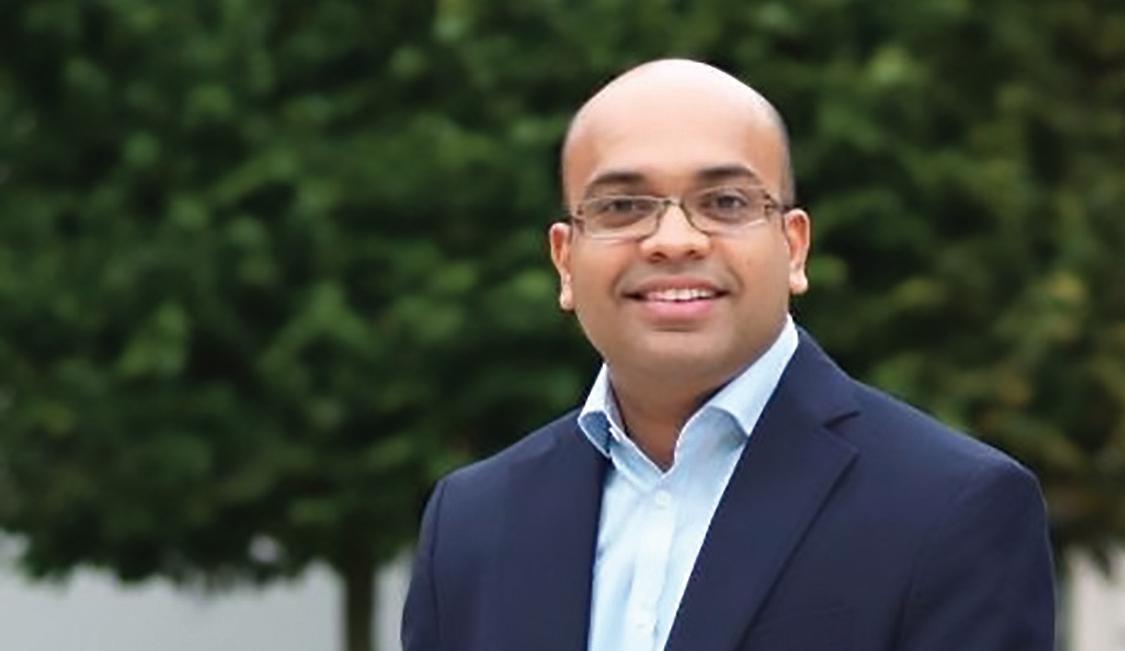 Modulex • Pune, India
Modulex • Pune, India
We use AI, IoT and blockchain to design and site modular buildings that we construct and erect all over the world. They include the tallest modular hotel in New York, a Marriott. We build modules in the factory and then ship them, right down to the bed, mattress and pillows.
So you can’t automate processes inside a room with plaster walls. How we do apply AI is in using our design library of different types of buildings to design structures to their sites in just a few seconds, including reflecting local planning regulations. We also use AI to improve the design efficiency inside our rooms. And we use AI in our factory to optimize supply chains, predict demand, improve our delivery times and help with costs.
CONTRACT ELECTRONICS MANUFACTURER SEEKING NEXT-LEVEL AUTOMATION
Misha Govshteyn, CEO MacroFab • Houston

We’re in an industry that has been highly automated for a long time, so we’re dealing with constraints in advancing it. One area that we’re still trying to automate is secondary assembly, where you take a circuit board and put it in an enclosure of some sort.
The problem is that enclosures and mechanical parts come in all shapes and sizes, so it’s a lot more expensive to automate. It’s not making major inroads.
Also, we have robotic automation, but what they’re doing is still fairly big and doesn’t require fine-grain motor functions. The fingers and motor functions just aren’t small or good enough to weave wire harnesses together, for instance. When robotics get nimble enough, at some point you may be able to use machine learning and AI to teach them to go build something.
THIRD-PARTY LOGISTICS PROVIDER AUTOMATING THE WAREHOUSE FLOOR
Kristi Montgomery, Vice President of Innovation, Research and Development Kenco • Chattanooga, Tennessee

Distribution is starting to catch up to where manufacturing has been in automation. Amazon was among leaders with autonomous mobile robots in its warehouses several years ago, and after Covid hit, we saw an enormous uptick in automation to address labor shortages and space constraints.
In our 100-plus facilities in North America, we also have more semi-automated augmentation of human labor, such as mechanical container-unload devices that help people palletize boxes and solutions that create the right box size on demand, reducing the sizes of small-parcel shipments. With UPS and others looking at dimensions as well as weight, it becomes really important to optimize that for customers.
RECREATIONAL VEHICLE MAKER LEVERAGING PRECISION ON THE LINE
Huw Bower, President Winnebago Brand of Winnebago Industries • Forest City, Iowa

We’ve invested around specific forming and cutting machines that cut with speed and volume but also accuracy, and that makes the whole assembly process much easier. On the line and in assembling cabinets, it’s a craftsman environment, where they’re highly skilled, and it’s difficult to automate. But because this automation can control tolerances to a much greater degree, the fit and finish becomes infinitely easier, and the quality is higher.
We use AI increasingly in digital work instructions and for the efficacy of training. We are also digitally transforming our operating environment and implementing a new ERP system in our core motorhome business in Iowa, so our advanced technology group and center of excellence are looking at AI opportunities in the volume work in our plastics-thermoforming area and repeatability in stitchcraft—integrated vertical operations where we could leverage insights from AI.
42 / CHIEFEXECUTIVE.NET / SPRING 2023
CE
The Future of Leadership.

Named the #1 Leadership Book of 2022















“The need to move to a new style of leadership, one relevant for the new world of work, has never been more important.”

—SATYA NADELLA, Chairman & CEO, Microsoft


“






—INDRA NOOYI, former Chairman & CEO, PepsiCo
—ADAM GRANT, #1 New York Times bestselling author of Think Again

Trust & Inspire is a powerful approach to people and leadership found precisely at the intersection of performance and purpose.”
—WILLIAM H. McRAVEN, Four-Star Admiral & Commander of US Special Operations (Ret.), #1 New York Times bestselling author of Make Your Bed
“...the de ning book for leadership in the 21st century.”
“This book is brimming with ideas on how to bring out the best in people.”
TRUSTANDINSPIRE.COM Scan to order your copy Scan for bulk pricing
WHERE THE
LIVES ON BOOM
Recession? What recession? Our annual CEO survey of the Best and Worst States for Business finds relentless activity all across America, fueled by the still-hot economy, foreign capital and the gold rush for EVs and chips.
BY CHIEF EXECUTIVE
THE LEHIGH VALLEY IS ONE OF AMERICA’S OLDEST ENCLAVES OF WESTERN civilization, a 40-by-20-mile dale set snugly in the mountains of eastern Pennsylvania. It was overtaken by German settlers in the early 1700s, resisted quickly in the Revolutionary War, supplied key regiments for the defense of the nation’s capital during the Civil War and became an important steelmaking center in the transformation of the United States into the world’s industrial powerhouse.
Then the area sank in the 1980s as an unfortunate symbol of the decline of American manufacturing. One steel mill after another closed; textile and garment makers left for China; tens of thousands of jobs were lost; and ultimately the Valley’s iconic company, Bethlehem Steel, went bankrupt in 2001.
Fast forward two decades, however, and the Lehigh Valley has again become an economic pacesetter for the nation. While not nearly matching its industrial output of a century ago, the Rust Belt region around Allentown is tapping into many of the big new trends funneling corporate investment flows from around the world into places like the Lehigh Valley.
So coveted are the area’s manufacturing workers, for instance, that Andy Fryer recently bumped starting wages up to $23 an hour from $18 at Easy Signs’ 72,000-square-foot plant. “That completely changed things,” says the cofounder of the Sydney, Australia-based sign maker that opened its first U.S. plant last year.
44 / CHIEFEXECUTIVE.NET / SPRING 2023 THE BEST & WORST STATES FOR BUSINESS 2023
RANKING 2023 BEST & WORST STATES FOR BUSINESS
<<LOSS FROM 2022 RANK GAIN FROM 2023>>
The governor goes after Disney, but disaffected Northerners keep population growing.


Utah Benefits from the increasing number of tech companies leaving beleaguered California.



Intel’s coming chip plant may help the state’s ranking rise again after a down year.

Kentucky

Rising reputation syncs with major EV-plant announcements by automakers.

manufacturing hub of the Sun Belt.
Our ranking is based on a 2023 survey of more than 650 U.S. CEOs, presidents and business owners and includes representation from every U.S. state.
-8 -7 -6 -5 -4 -3 -2 -1 0 1 2 3 4 5 1 2 3 4 5 6 7 8 9 10 11 12 13 14 15 16 17 18 19 20 21 22 23 24 25 26 27 28 29 30 31 32 33 34 35 36 37 38 39 40 41 42 43 44 45 46 47 48 49 50 Texas Florida Tennessee North Carolina Arizona Indiana Georgia South Carolina Nevada Utah Ohio Virginia Colorado Idaho South Dakota Delaware Michigan Kentucky Wisconsin Missouri Iowa Oklahoma Kansas Nebraska Wyoming Louisiana Montana New Hampshire North Dakota Alabama Arkansas Maryland Pennsylvania New Mexico Rhode Island Maine West Virginia Mississippi Vermont Minnesota Alaska Connecticut Hawaii Massachusetts Washington Oregon New Jersey Illinois New York California
Florida
GOVERNOR RON DESANTIS: GAGE SKIDMORE,
| DISNEY, OHIO,
Silicon Valley woes undercut a main pillar of the state’s progressive model. Will the AI boom help or hurt?
WIKIMEDIA COMMONS.
ALABAMA, STOCK.ADOBE.COM.
TAXING MATTERS
Windfalls of federal funds and competition for huge new economic plums have set off a tax-cutting derby among states as they leverage the unprecedented bounty to compete for more big development prizes than ever before. Politicians, development officials and business leaders are pursuing a new generation of industry clusters—including pharmaceutical manufacturing, technology research, distribution centers and electric-vehicle and microchip-making plants—that have them slashing tax rates and creating new business incentives at a feverish pace.
Among other things, the new possibilities for beefing up their economic bases and job growth have allowed state officials to look with actual relief at the troubles Virginia is now facing with the construction pause on Amazon’s HQ2, a prize that five years ago was being pursued by the entire country.
“States have experienced a sustained period of robust economic growth, even independent of federal aid,” says Jared Walczak, vice president of state projects at the Tax Foundation. “So their own tax revenues have grown substantially. And states generally have been good about determining what portions of [federal] monies are sustainable and which are one-time things.”
In fact, more than half of states have cut tax rates in the last two years, according to the Tax Foundation. This has set off big regional competitions. Colorado, for instance, adopted a 4.4 percent top rate on income, and Arizona slashed its rate to 2.5 percent, leapfrogging the rate cut to 5 percent that Utah adopted five years ago.
A movement toward flat income taxes favored by businesses has also spread, with Georgia, Mississippi, Arizona and nine other states joining Idaho in enacting one. In the Midwest, for instance, this set off a flurry of copycat moves, such as Iowa’s cut in its top tax rate to 3.9 percent from 8.5 percent in 2026, helping prompt Wisconsin’s GOP legislature to propose a major tax cut that includes a flat rate of 3.25 percent on income.
Meanwhile, states are learning how to leverage a total of hundreds of billions of dollars of federal largess from Covid-era relief, chunks of the new infrastructure bill, provisions from the Inflation Reduction Act, and industrial and technology subsidies from last year’s CHIPS legislation to gussy up their profiles without running afoul of federal rules about exactly how they can spend the funds.
“The funding has provided an opportunity for states to address not only pandemic health and the economic fallout that happened from a budgetary standpoint but has also provided them the chance to make targeted investments” in areas ranging from bridge repair to beefing up education programs, says Emily Maher, project manager of fiscal affairs for the National Conference of State Legislatures. “Each state has its own gaps and challenges.”
“We have referrals coming to us now and plenty of people to choose from.”
While Pennsylvania as a whole ranks only No. 33 in the 2023 Chief Executive Best & Worst States for Business survey of CEOs, the Keystone State did rise two spots from a year earlier. And the economic vibrance displayed in pockets such as the Lehigh Valley—even amid a recessionary mindset that has slowly overtaken U.S. companies—underscores the dynamism that remains in state business climates in general.
Texas again places No. 1 this year, as it has annually in the survey since its inception. Florida ranked No. 2 again, extending its own string but also putting unprecedented pressure on Texas for
the top spot. Tennessee once again is ranked No. 3 in state business climate by CEOs. North Carolina, at No. 4, and No. 5 Arizona flipped spots this year. No. 6 Indiana is a mainstay as well.
Just as CEOs have solidified opinions about the welcoming top states, their assessment of the worst has ossified: No. 47 New Jersey, No. 48 Illinois, No. 49 New York and No. 50 California remain the same as in the 2022 survey.
But in between, there are some significant advances in this year’s ranking, especially the rise of Georgia and South Carolina, each up four spots to No. 7 and No. 8 in the Chief Executive list. They’ve joined Florida in the broad advance of the Southeast, especially as a new manufacturing hub.
Other notable rises include Virginia, which moved up two spots to No. 12, and Idaho, which advanced two spots to No. 14. Kentucky moved up five spots, to No. 18. Meanwhile, Ohio dropped by four slots to No. 11, and South Dakota fell by a remarkable six spots to No. 15.
Domestic Dominance
Broadly speaking, the trends dictating how states are performing as economic actors these days extend beyond CEO opinion to
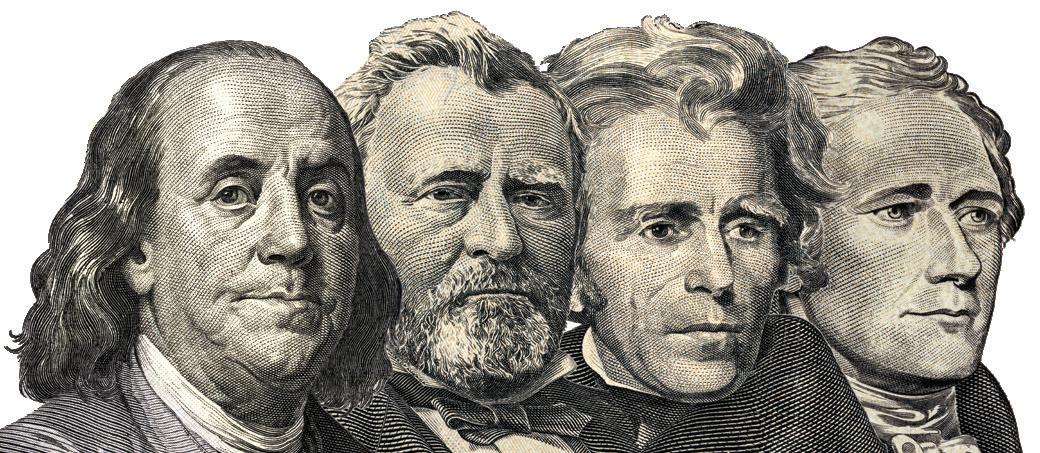
46 / CHIEFEXECUTIVE.NET / SPRING 2023
“The number of companies looking in the U.S. for the first time or opening large U.S. facilities is unbelievable, based on prior years.”




A Division of the Missouri Department of Economic Development
SOUTH CAROLINA
Proterra will invest $76 million in a battery factory opening in Greer, part of the continuing manufacturing boom taking place in the state.

CEO of B. Braun of America, a unit of the Germany-headquartered maker of medical supplies with a plant in Lehigh Valley. “So the U.S. is the market. It’s also clear that if you want to be successful here, you need to go big.”
Stephanie Yarbrough, head of transatlantic relationships for the Womble Bond Dickinson law firm, is coping with the trend. “The number of companies looking in the U.S. for the first time or opening large U.S. facilities is unbelievable, based on prior years,” she says. “They’re saying, ‘We need to build where we need to be supplying.’ They would have gone to Mexico, but we’re seeing that all come home to the U.S. now.”
South Carolina and Georgia have been taking advantage all along, as much as any state. Volkswagen, for instance, keeps boosting its intentions for manufacturing of EVs and batteries in North America and is eyeing the Columbia, South Carolina, area for plant sites with enthusiasm.
“South Carolina offers probably the most favorable environment of any state for us, in terms of the working environment, any support package and its location in terms of our factory in Chattanooga” and one in Puebla, Mexico, says Reinhard Fischer, head of strategy for Volkswagen North America.
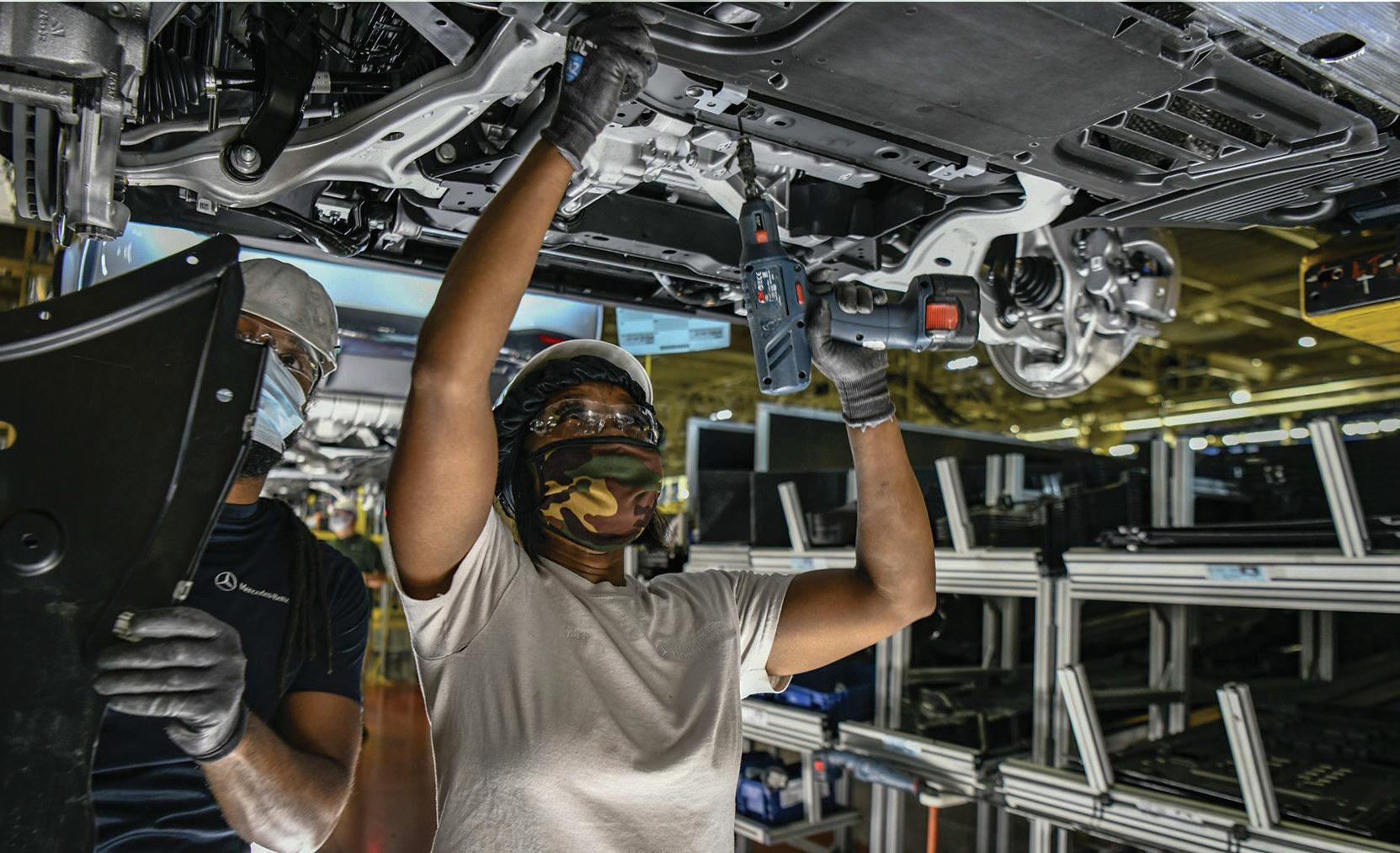
ALABAMA
Mercedes-Benz’s $54 million investment in a Tuscaloosa logistics center will support electric vehicle production.
include foreign companies’ increasing embrace of the U.S. market; reshoring and a renaissance in domestic manufacturing; the leveraging of state coffers flush from recent federal largess through tax cuts and other means (see “Taxing Matters,” p. 46); the rising value of experienced labor, along with the expansion of automation; and the pandemic-era migration from city cores to exurbs and beyond.
Absorbing the lessons of the supply chain debacles during Covid and the blows dealt to them by the new geopolitics, many companies abroad are gazing at the U.S. with new appreciation. “If you’re a Western European company, there are lots of challenges in many big markets across the globe, including Ukraine, Russia and China,” says Jean-Claude Dubacher,
A VW investment in South Carolina would add to the automotive-manufacturing heft of the state, which already hosts assembly plants owned by Volvo and Mercedes, while Georgia is home to a major Kia factory and the announced site of a $5 billion investment planned by EV-truck maker Rivian.
The Human Factor
Labor availability is key, says David Ginn, president and CEO of the regional economic-development alliance for Charleston, South Carolina. “We have a net of about 30 people a day moving to this market, most of them in the prime demographic,” he notes. “Plus we have thousands of military people around here who are retiring and discharging from the military and are available.”
Georgia has been notably “aggressive in messaging to recruit people from the coasts,”
48 / CHIEFEXECUTIVE.NET / SPRING 2023
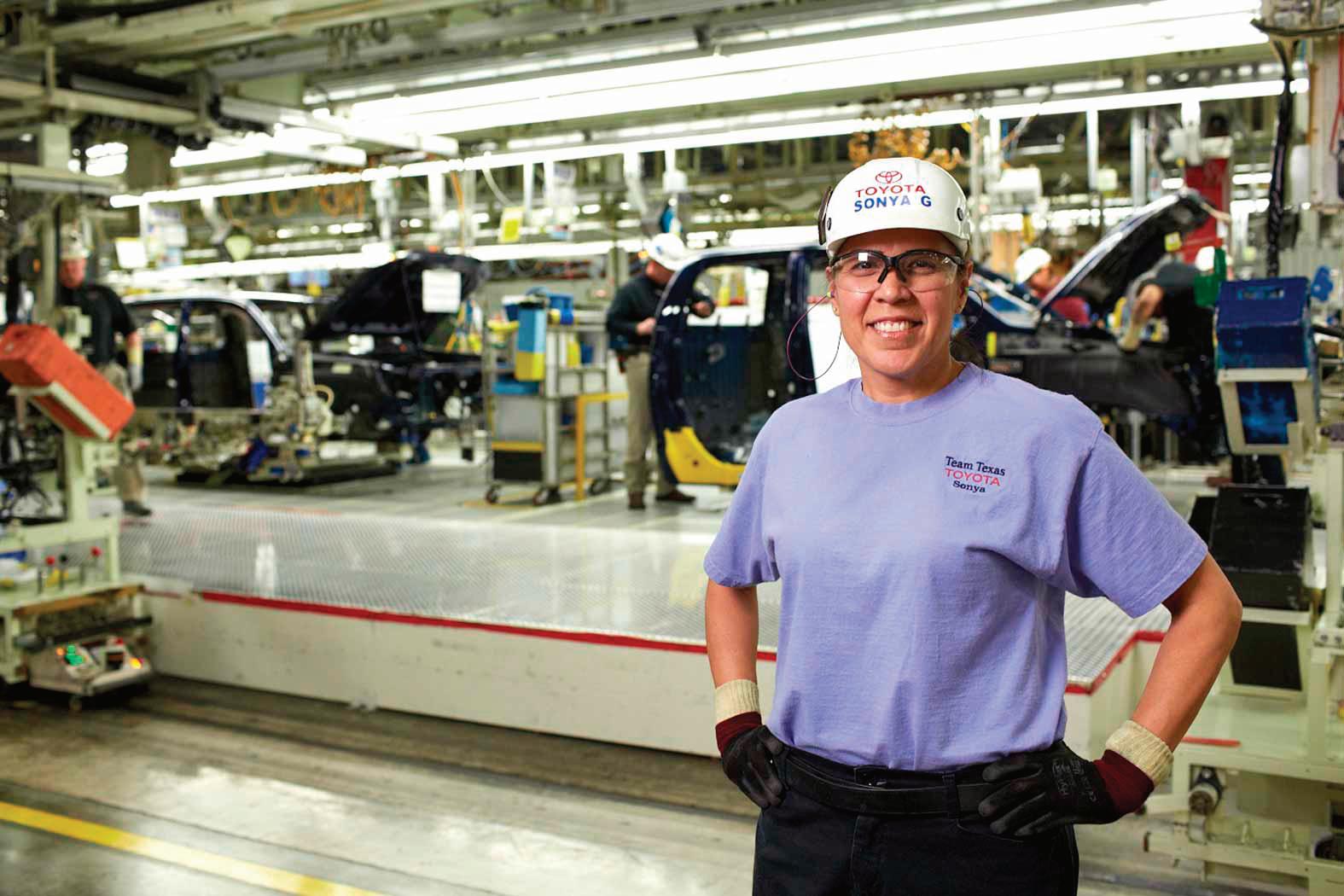





INDIANA
In May 2022, Jeep maker Stellantis and Samsung announced they would build a $2.5 billion EV battery plant in the Hoosier State, their first in the U.S.
pioneering program of “place making” has seen the state legislature approve $500 million of expenditures to help cities and counties make themselves more appealing economically and in lifestyle terms— through partnerships to create more affordable housing, for instance.
“We’ve become more on the roadmap for people who want to do remote work or really just want a change of pace,” says Brad Chambers, Indiana’s commerce secretary. “People don’t want to be in the Northeast or on the West Coast; they want a good quality of life and place to live and great employment prospects at the same time.”
Meanwhile, Indiana and the rest of the industrial Midwest continue to rally around their new favored position as the home of the burgeoning electric-vehicle and chip-manufacturing industries. Stellantis, for instance, recently chose Indiana for the site for a joint EV-battery plant with Samsung SDI of Korea.
“Ultimately, we chose Indiana [because it] offered a large site that would allow for further expansion and the ability to colocate suppliers,” says Mark Stewart, chief operating officer of Stellantis, the Frenchowned automaker with a long history of production in the Upper Midwest. “We also have a significant existing footprint in Kokomo, so the state understands the skills and capabilities of the workforce in the area as well as the regulatory environment.”
MICHIGAN
GM’s electric battery lab is one of many projects automakers have undertaken in the state.
says Larry Gigerich, managing director of the Ginovus economic-development consultancy and incoming chairman of the U.S. Site Selectors Guild. “They have been promoting Atlanta and other markets as attractive and diverse places rich in culture.”
The map of economic might and opportunity continues to shift across the country as well. More inland states are getting looks by workers as Silicon Valley continues to fold in on itself in some ways, with hundreds of thousands of layoffs of tech workers, as the funk at Amazon has resulted in stoppage of construction of its vaunted HQ2 in Virginia, and as the foundations of Big Tech finance shake with the demise of Silicon Valley Bank.
Indiana is stepping up. For example, its
And while the high cost basis of Illinois helped lead to Stellantis’s decision to close its ancient assembly plant in Belvidere, the strength of another of the state’s legacy businesses—life sciences—has helped the Chicago area land a commitment of $250 million from Facebook founder Mark Zuckerberg to establish a new biotech hub in the city.


Accelerating Entrepreneurship
Meanwhile, Pittsburgh keeps building on its burgeoning role as an international center of robotics development and manufacturing, including driverless vehicles, which stemmed from research at its Carnegie-Mellon University—and local leaders’ ability to construct a tech cluster around it. “It’s been
50 / CHIEFEXECUTIVE.NET / SPRING 2023
A Vision for Virginia
By Governor Glenn Youngkin

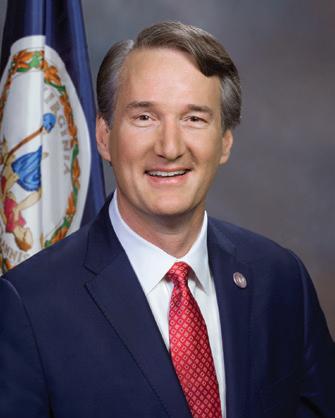
The Commonwealth of Virginia has been a leader in entrepreneurship and innovation since its founding in 1607 and has continued to pioneer new models for economic development in the 21st century. Today, we are hitting the accelerator to foster a best-in-class business environment that builds on Virginia’s tremendous assets: a strategic mid-Atlantic location that enables domestic and global connectivity; exceptional rail, road and marine infrastructur; competitive business costs, a top-rated education system; and a robust workforce in a right-to-work state.
From the sweeping landscapes of the Shenandoah Valley to the coastal plains of Chincoteague, to the national historic landmarks of Jamestown and George Washington’s Mount Vernon, Virginia is also an incredible place to live, as I have my entire life.
My administration has developed a comprehensive and ambitious plan to enhance Virginia’s competitive position and drive economic development into another gear. Virginia has added 90,000 jobs since I took office, and the Commonwealth is doubling down on policies that impact job growth and business investment. Last year, for example, Virginia passed nearly $4 billion in tax relief—the largest in its history—reducing the cost of living for Virginia families. The package included the elimination of the state grocery tax, an income tax deduction for military retirement income for veterans and a near doubling of the standard deduction for single and joint filers, and we have asked the General Assembly to do more, lowering rates for individuals, corporations and retirees in 2023. I’ve also signed the largest K-12 and higher education budget in Virginia’s history and significantly increased funding for public safety, proving that we can both reduce the cost of living and make key investments in public priorities. The Commonwealth is now on a path to compete to win new jobs and welcome new Virginians who desire a better quality of life.
Virginia has many competitive advantages for businesses, and the Commonwealth is building strategic ecosystems for key industry sectors; improving connections between talent and businesses and preparing Virginians to acquire in-demand, marketable skills to grow our workforce; making historic investments in site development to enhance the Commonwealth’s infrastructure with more competitive project-ready sites; addressing housing supply shortages, energy costs and individual taxes to reduce the cost of living in Virginia; modernizing Virginia’s regulatory processes to reduce business costs—transforming the way government works for its citizens; and strengthening a statewide culture conducive to entrepreneurship by enhancing connections between businesses, universities, investors and talent and reducing burdensome regulations for small businesses and early-stage companies.
These initiatives are catalyzing waves of economic in-
vestments and business expansions across multiple industries to invigorate job growth and opportunity in Virginia. Amazon Web Services (AWS) plans to invest $35 billion by 2040 to establish multiple data center campuses across Virginia—the largest capital investment in our history. We have welcomed the global headquarters of aerospace giants Boeing and Raytheon from Chicago and Boston and secured the expansion of Hilton’s global headquarters in Fairfax County. The LEGO Group will invest over $1 billion to establish its only U.S. manufacturing plant near Richmond, including a 1.7 million-square-foot precision manufacturing facility that will create more than 1,760 jobs. Plenty Unlimited is building the world’s largest indoor vertical farming campus in Virginia, a $300 million investment that will create 300 jobs. Thermo Fisher Scientific is investing $97 million to expand its bioanalytical laboratory operations in the greater Richmond region, creating more than 500 new jobs. Rocket Lab USA selected Wallops Island as the location for its launch site and will invest more than $100 million to construct its manufacturing and operations facilities for its Neutron rocket, creating 246 new jobs for Virginians. Virginia is hitting a new gear and demonstrating once again why the Commonwealth is the best location for business in America.
Virginia was built on grit, determination and ingenuity, and the Commonwealth seeks to attract companies that want to build their future in the same fashion. I am honored and humbled to serve as Governor, and I want business leaders to know that Virginia is here to compete for their business creations, relocations and expansions, and Virginia is here to win.
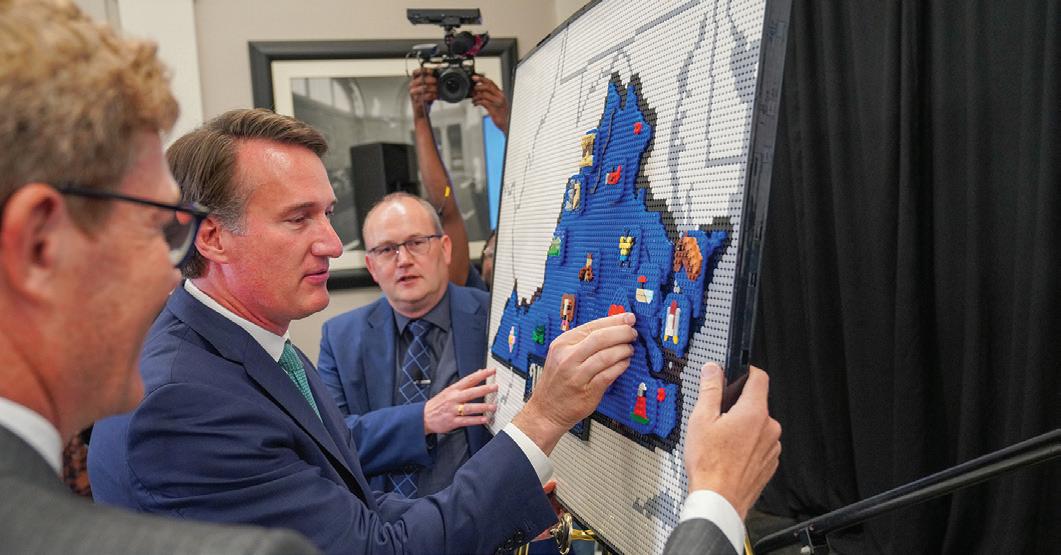 Governor Glenn Youngkin is committed to making Virginia the best business location in America.
Governor Glenn Youngkin is committed to making Virginia the best business location in America.
THOUGHT LEADERSHIP PROVIDED BY VIRGINIA ECONOMIC DEVELOPMENT PARTNERSHIP
The LEGO Group is establishing its U.S. manufacturing plant outside Richmond.
OHIO
MISSOURI
Meta plans to bring a one million-squarefoot data center to Kansas City.

a purposeful effort by leaders… which has really helped attract a lot of capital and created an entrepreneurial ecosystem,” says Joel Reed, president of the Pittsburgh Robotics Network.
Across the state, the Lehigh Valley is humming as well. Manufacturing has returned to its legacy status as the No. 1 sector for output regionally, at an annual clip in 2021 of $8.4 billion from about 750 different companies. The Valley has only about a 3 percent vacancy rate for industrial space. Other modern industries are right behind in job growth, including healthcare. As one result, mean wages rose to an average of $25.76 in 2021 from $23.22 just two years earlier.
The fact that the Valley never was a huge office center has turned out to benefit it post-Covid. So has an influx of young
people out of New York City, Philadelphia and north New Jersey. Residential housing is tight, and rents have skyrocketed, including for apartments in downtown Allentown in some repurposed industrial buildings.
The area also has become the top growth market in the state for people 40 and under. Lehigh Valley gained a net of nearly 1,800 people in 2021 who were moving from other counties, the most new migration in a oneyear span in at least a decade, according to the U.S. Census.
An influx of foreign companies is creating much of the opportunity. “We have definitely seen the acceleration of both internationally based and domestic companies here that want to have more supply close to large population centers, whether it’s a production facility or a distribution facility where you don’t get caught with such a short supply,” says Don Cunningham, chief of the Lehigh Valley economic-development authority.
B. Braun, for instance, has invested more than $200 million in its local manufacturing complex over the past few years, part of its overall $1 billion in U.S. investments over that period. It produces plastic medical components and devices and pursued a 310,00-square-foot expansion in August.
“It’s sort of in the middle of everything with all the distribution centers here and access to the East Coast, which makes it a great place to invest,” Dubacher says. “And there’s a bit of a life sciences ecosystem, and great universities and community colleges. This is where we’re going to grow.”

52 / CHIEFEXECUTIVE.NET / SPRING 2023
CE
Intel made headlines when it announced plans to build the world’s largest chip-making complex in the state.
Break The Billion Dollar Barrier
CEO100 is Chief Executive Network’s private, member-only peer group with access to world-class mentors, exclusively for Presidents and CEOs of $100M+ companies
Advice, ideas, and support on the toughest issues you face, including:
• Digital transformation
• Mergers, acquisitions and divestitures
• Succession
• Global expansion/deglobalization
• Political and economic risk
• Thorny personnel issues
• Asset allocation
• Board dynamics
• Organizational structure
• Critical skills gaps
• Difficult conversations
• Personal balance and burnout
• and more
MENTORS INCLUDE:
JOHN LUNDGREN
Former Chairman & CEO of Stanley Black & Decker
FRED HASSAN
Former Chairman of Bausch & Lomb, CEO of Shering-Plough and Pharmacia Upjohn
BOB NARDELLI
Former GE Vice Chairman and Divisional CEO; former CEO of Home Depot and Chrysler
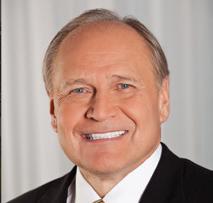
RAM CHARAN World-renowned business advisor to Fortune 100 CEOs


MAGGIE WILDEROTTER
former CEO of Frontier Communications and Costco and Docusign Board Member
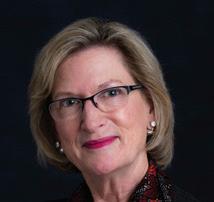
MARK WEINBERGER

Former Global Chairman and CEO of EY
HARRY KRAEMER
Former Chairman and Chief Executive Officer of Baxter International Inc.

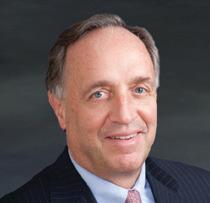
For membership inquiries and to find out more, visit ChiefExecutiveNetwork.com/CEO100 or call Rob Grabill at 201-323-3716

CHIEFEXECUTIVE.NET / MAY/JUNE 2019 / 53
CHIEF EXECUTIVE
NETWORK
SILENCE IS A SUPERPOWER
BY DAN BIGMAN
DAN LYONS HAS A PROBLEM A LOT OF US HAVE. HE TALKS TOO MUCH. He knows it. He’s blown jobs and relationships, and annoyed a lot of people in his time because of his mouth. He’s also made a good living off of it, working as a journalist (Forbes, Newsweek) and a comedy writer (for HBO’s Silicon Valley) but when it came to other parts of his life, it was, as he says now, “a challenge” (full disclosure—we worked together for years, and I found him more brilliant and hilarious than annoying, but that’s me).
His self-diagnosed talkaholism led Lyons, author of a number of best-selling books, including Disrupted: My Misadventure in the Start-Up Bubble and Lab Rats: How Silicon Valley Made Work Miserable for the Rest Of Us, to his latest book, STFU: The Power of Keeping Your Mouth Shut in a World That Won’t Stop Talking.
Working on STFU made him realize just how much noise we create. In meetings, online and in our personal lives, our inability to sit quietly or listen to others has become an epidemic. Driven by social media, we’re in what he calls “The Age of Agitation,” where trillions of birthday greetings, angry political polemics and photos of dinner are transmuted into gold by Silicon Valley’s attention-gratification engine.
It isn’t just Facebook, TikTok and Instagram. According to Lyons’ research, there are more than two million podcasts online now, with more than 48 million episodes, but more than half of them have been downloaded fewer than 26 times. A McKinsey study found workers spending 28 percent of their day with email—writing, responding, writing, responding—as one of

54 / CHIEFEXECUTIVE.NET / SPRING 2023 THE EDGE
In a world of oversharing, over-emailing and overtalking, quiet is more than just golden. It’s one of the most powerful leadership skills you can develop. But it can take some work.

the great productivity tools of the last 100 years morphs into a productivity suck.
“There are more than a billion meetings that Americans have every year,” says Lyons. “Half are said by the people who are in them to be a complete waste of time. So, you have this phenomenon where people are just talking for the sake of talking and tweeting for the sake of tweeting.”
For CEOs, there are additional problems—and risks—says Lyons. The push to be “more authentic” and “transparent” and communicate is backfiring for many. Faced with issues from remote work to political correctness to the economy, too many leaders, says Lyons, are goaded into reflexive “all hands” meetings, for instance.
“The slides will be loaded with information, and we’ll spend an hour just telling everybody in the company what we’re doing,” says Lyons. “Really they should take half of the time. They should share way less, abstract it to a few big points, and then spend half the time listening, taking questions. Look at the debate over return to office. Both sides are just talking across each other, talking at each other, and not hearing each other.”
In an environment like this, Lyons says, becoming quieter—and also a better listener—will not only make you happier, it will also make you more productive (and even more powerful). How do you get there? Lyons shared a few tips with Chief Executive :
Benchmark Your Talking
To start, get data on how you interact with others, especially in meetings. A great way to do this is to record a session and then have it transcribed, using an online service like Temi, or others.
Then highlight your speaking versus everyone else’s. It’s an easy way to visualize what you’re saying—and how much you’re
saying. “Once you see it, you cannot unsee it,” says Lyons.
Another way, if you can bear it, is to videotape your meetings and rewatch them. If you start to squirm, it’s time to take a step back and let other people talk.
Get Quiet
Lyons interviewed Dhiraj Rajaram, who runs a big data analytics company called Mu Sigma in India. Rajaram recommends that his employees get up from their desks at least twice a day, at 10:30 and 2:30, and spend 30 minutes in silence. “You don’t have to meditate, but just no screen, go for a walk, whatever. Just chill for 30 minutes,” says Lyons. “His theory was, ‘Yes, you’re losing an hour of productivity, but you’re actually going to be more productive in the other hours, and it really sparks creativity.’”
In Japan, many overstressed executives find solace in “forest bathing”—basically a slow, media-free wander in the woods—and have seen substantial increases in both physical health and mental health as a result. The idea stems from a government program aimed at reducing heart attacks and other stress-related illnesses. Studies found that not only did the program lower blood pressure and improve sleep, but it also increased the body’s production of cancer-fighting cells.
“The whole point is, you don’t do a lot,” says Lyons. “You don’t go hike really fast and see how many miles you can cover, or how many feet you can climb. You do the opposite. You barely go anywhere. You start tuning into trees and sounds, and you look around. I found it really enjoyable— and helpful.”
Grow Your Listening

The most successful CEOs are practiced listeners, able to ask the right questions and settle in to hear out the response. Still, there is always work to be done. Lyons quotes Tom Peters, best-selling author of In Search of Excellence, as saying that if you are not “completely wiped out” after 30 minutes of active listening, “you’re not doing it right.”
To work on this essential skill, Lyons interviewed legendary Silicon Valley
56 / CHIEFEXECUTIVE.NET / SPRING 2023
There are more than a billion meetings that Americans have every year. Half are said by the people who are in them to be a complete waste.”
“
A new book by best-selling author Dan Lyons explains how talking less can deliver more.
Increase Profits & Grow Faster
Chief Executive Network (CEN) members reported enjoying 30% higher profit margins and over 102% faster growth than other US companies last year. By connecting with other experienced and successful peers through CEN’s powerful network, CEOs can use their collective knowledge and first-hand experience to increase profits and grow faster.

Save Time & Money
CEN brings together CEOs in the same industry and/or location with complementary skill sets (who are not competitors) to find actionable solutions to real-world problems in minimal time. Inperson meetings are professionally facilitated and held at convenient locations. Members also stay connected virtually with a network of >600 peers.

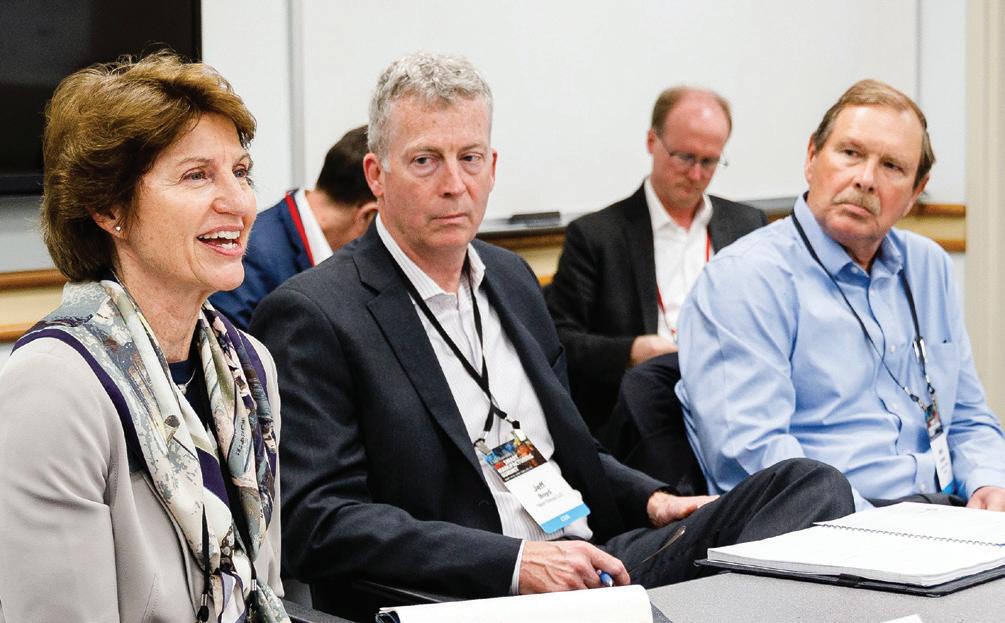
Lead Confidently Through Uncertainty
CEN equips CEOs with tools to navigate uncertain times. Our members can stay ahead of disruptive technologies, customer needs, competition and socio-economic trends through exclusive access to top minds in their industry, personalized advice and invaluable best practices and benchmarks. We empower CEOs with the knowledge and connections they need for long-term success.
Take your business to the next level - Apply now to join Chief Executive Network Call Rob Grabill at (201) 323-3716 or visit ChiefExecutiveNetwork.com What could your organization accomplish if you could peer into the future? Your Goals. Achieved.
executive coach Jerry Colonna. A big part of Colonna’s work is making the Valley’s notoriously talky founders and CEOs into better listeners. How? One exercise is to sit with someone else with three questions for the other person. “You go first, you answer those three questions, and I don’t talk at all,” says Lyons. “I just listen. Even if I want to jump in, or I want to say, ‘Oh, Dan, that same thing happened to me.’ Just force yourself to listen. And then we switch and take turns.”
If you answer your questions in less than five minutes, you both must sit in silence for the remainder of the five minutes.
“So, five minutes are up, then I answer, and same deal, but then we take five or 10 minutes and we talk about what was it like to listen. What did you hear? What did I hear when you were talking, and was that the same as what you were trying to convey? Did I really understand it?”
In another, more extreme session, interview someone for 30 minutes without taking any notes. When the person leaves, write down everything you remember from the conversation. “Then go talk to the person who talked to you and say, ‘This is what I remember.’ Two things happen: One is you remember things incorrectly. You obviously remember a lot of things correctly. But the other thing is, often you missed the most important nuggets from what that person was telling you… Most people are terrible at it, but over time, you can get better.”
SITFO
Given the technology-driven world we’re in, perhaps the most important place—and in many ways the most difficult place—to work on quieting is online. Lyons’s advice: Just shut it the f*&k off. “Ask yourself why you are online in the first place. What are you hoping to get from it? And are you getting it?” Lyons writes in his book. “Our phones
are FOMO devices, a way to make sure we never miss out on anything. It’s significant that the first word in the acronym FOMO is fear. We believe that our phones will address that fear. We clutch them like security blankets. We use them to soothe ourselves, even though, ironically, they are the exact opposite of soothing. They are agitation devices, little battery-powered fear machines.
“We talk about the Internet and information overload as if we’re helpless against them, as if they were something happening to us rather than a choice we are making. The noise will never go away,” writes Lyons. “But we can.”
Finally, Just Say Less
If you really want to get people’s attention—and you really want to become a more powerful communicator—or just more powerful—Lyons’s advice is simple: Say less. A lot less. Marketing guru Guy Kawasaki, for instance, says the perfect email contains five sentences, according to Lyons. “It’s okay to use fewer, but never use more. Writing long emails wrecks your productivity and burdens the recipient.”
An extreme version of that is Amazon founder Jeff Bezos’s “Question Mark Method.” If someone inside or outside the company emails him with a complaint, Bezos forwards the message to the person responsible, adding just a single character: “?” “People live in fear of getting one of these emails from their notoriously demanding boss.”
Lyons’s favorite example of a corporate leader saying much, much more by saying far, far less is Apple founder Steve Jobs. “Watch Steve Jobs do the introduction to the iPhone,” says Lyons. “It’s easy to find it on YouTube. And watch how he uses silence when he walks on stage. It is mind-blowing to see how everybody is leaning forward in their chair. You cannot look away.”
That leads to his biggest takeaway for CEOs: “Silence is power, silence is confidence, and it’s polite. If you combine it with listening, you’re drawing people in, you’re making them feel seen and heard, and you’re bringing out the best in the people that you’re leading.” CE
58 / CHIEFEXECUTIVE.NET / SPRING 2023
“
We talk about the Internet and information overload as if we’re helpless against them, as if they were something happening to us rather than a choice we are making.”
LEADERSHIP CONFERENCE
Solutions for the most pressing challenges facing business leaders today.

How are the most effective business leaders getting their teams to innovate, adapt and execute to position their organizations for sustainable success?
During this exclusive event, get practical ideas and tangible solutions to help you and your executive team:
✔ Upgrade your strategy to beat your competitors and outgrow your market
✔ Lead more effectively – and gain more personal satisfaction

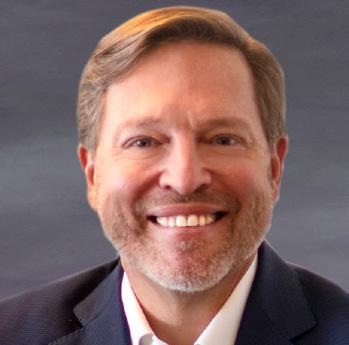

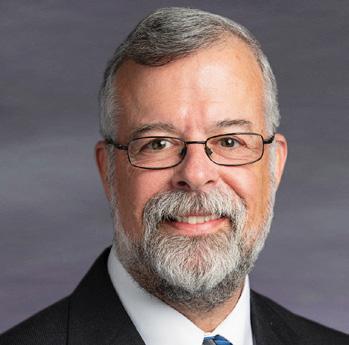

✔ Focus on the right things to increase profitability
✔ Gain new insights into customers’ changing needs to serve them better
Featuring a
of World-Class Experts
Can’t-Miss
Here ALAN BEAULIEU
Research MARSHALL GOLDSMITH
Coach & Advisor, Author, What Got You Here Won’t Get You There
Register by May 31 to save $500 with code Spring500 www.chiefexecutive.net/leadershipconference NOVEMBER 2-3, 2023 | NASHVILLE, TN
Roster
CINDY BAIER CEO, Brookdale Senior Living and Author, Heroes Work
President, Institute for Trend
CEO
VERNE HARNISH Author, Scaling Up and Mastering the Rockefeller Habits HERMANN SIMON Author, Hidden Champion of the Twenty-First Century, and Founder of Simon-Kucher
Mission First at Melmark

Melmark is a multi-state human service provider with premier special education schools, professional development, training, and research centers. Programs and services include a children’s day schools, afterschool and residential programs, adult day and adult residential programs serving hundreds of individuals. Other services include public school consultation and family outreach services, a formal professional development program including onsite graduate education, and expert speaker series offerings.

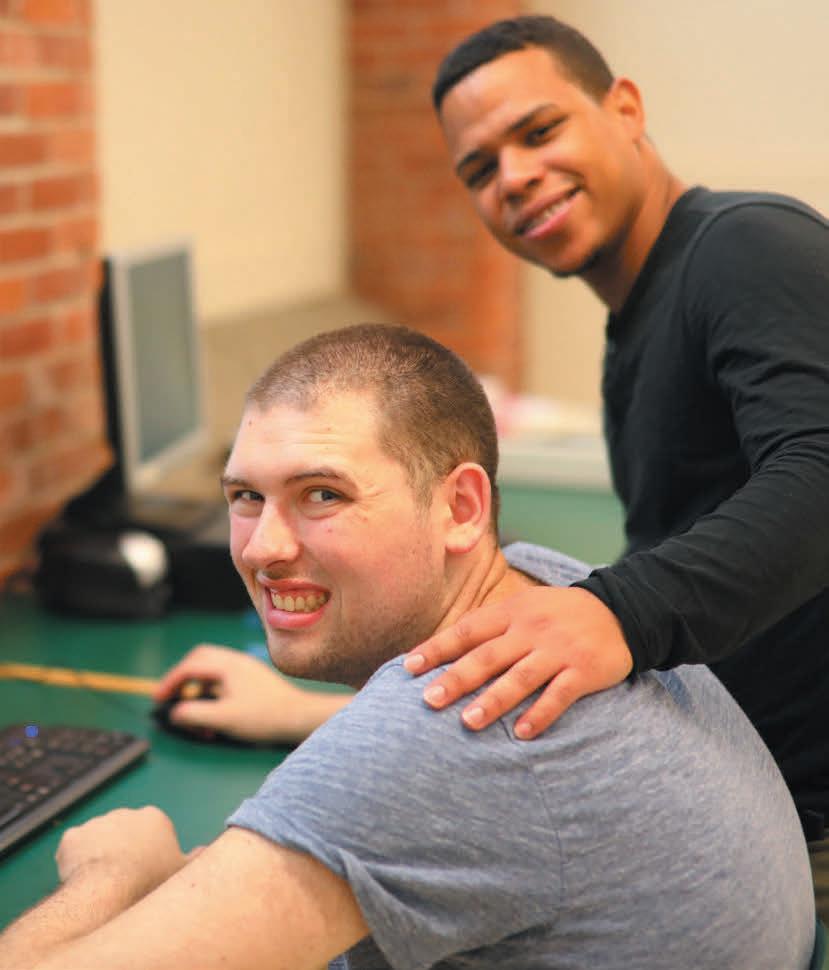
Philanthropic support from individuals, foundations and business communities sustains and enhances Melmark’s ability to care for the people we serve. Charitable donations allow us to develop and invest in new technologies, innovative programs and evidence-based services. For more information or to make a tax-exempt donation in support of Melmark’s mission, please visit www.melmark.org.

Melmark is Mission First. Every Individual, Every Day.® Melmark Pennsylvania 2600 Wayland Road Berwyn, PA 19312 1-888-MELMARK Melmark New England 461 River Road Andover, MA 01810 978-654-4300 Melmark Carolinas Pineville Church of the Nazarene 8614 Pineville-Matthews Road Charlotte, NC 28226 704-900-5208
Melmark Divisions
Serving Over 500 Individuals in 50 Programs from the Following 12 States
New Special Education School Facilities
The first cohort of Melmark employees have achieved Certified Diversity Executive (CDE Melmark’s ongoing commitment to diversity, equity and inclusion work. This rigorous education course, training and certification process challenges conventional equity and diversity work, reinforcing the need for organizations to lead inclusion from the top and aligns strongly with Melmark’s mission and strategic Every Individual, Every Day.

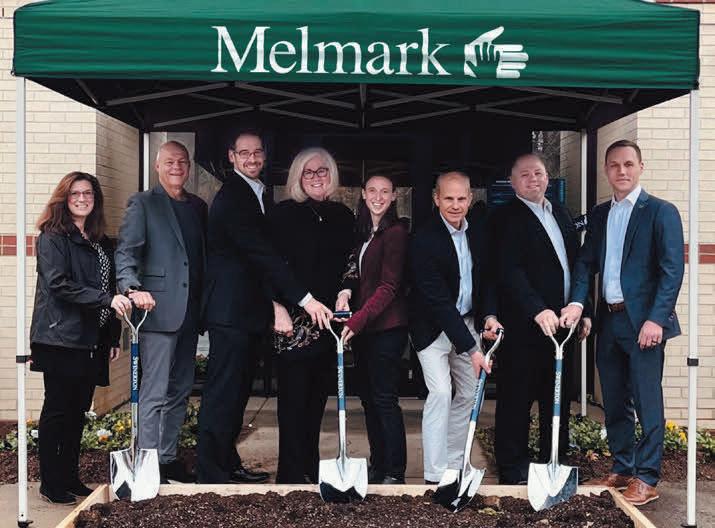

www.melmark.org
Massachusetts Pennsylvania
California Connecticut Delaware Illinois New Hampshire New York New Jersey Rhode Island South Carolina
Current Melmark divisions are located in these states. North Carolina
Melmark New England celebrated the groundbreaking for a new school building in Stoughton, MA slated to open in May of 2023.
Melmark Carolinas celebrated a groundbreaking for a new school building in Charlotte, NC slated to open in the spring of 2023.
Melmark Pennsylvania celebrated the grand opening of a new school building in Berwyn, PA in 2022.
SOLVING SOCIAL ANARCHY
SOCIAL MEDIA HAS BEEN BOTH A TREASURE chest and a Pandora’s box for companies and their CEOs, a prickly phenomenon of the Internet age whose business implications continue to cascade faster than leaders can create and refine their responses.
Thousands of brands have raised their profiles and created huge marketing relevance through savvy use of TikTok, Twitter, LinkedIn, Facebook, Instagram and other social media. At the same time, many companies have felt the sting of social media opprobrium for a misstep, the helplessness of being the target of a meme or the pain of having to fire or otherwise discipline employees for social media missteps that cast their employer in a bad light.
Consider that Dollar General fired Tampa store manager Mary Gundel last year after she went on TikTok to blame the company for limiting the number of employees and slashing their hours. New Jersey medical provider AtlantiCare let customer-care executive Heather McVey in 2020 go after she criticized the Black Lives Matter movement on Facebook. In Edmonton, Alberta, in 2016, Connie Levitsky lost her new job as a sales clerk for plus-size women’s Addi-
tion Elle after she used the word “fat” on Facebook to describe the chain’s customer base.
And even a decade ago, in a tweet heard around the world, InterActive executive Justine Sacco was sacked as head of corporate communications for Barry Diller’s company after she posted—right before a flight from London to Cape Town—“Going to Africa. Hope I don’t get AIDS. Just kidding, I’m white!”
Blue Yonder’s Duncan Angove is among company chiefs grappling with the implications of social media at the highest levels. “Should we or shouldn’t we do content moderation?” says the CEO of the supply chain management company. “What about free speech? But to what extent is every employee a brand ambassador for us? We don’t take political positions in anything that we comment on, but we don’t really try to moderate what our associates say either.”
Or, as American University management professor Mark Clark puts it, “You have to bring employees to the forefront here. ‘We want to respect your right to engage in the public sphere and encourage that to some degree, but understand that this is a private enterprise, and we want to please stakeholders. We have
62 / CHIEFEXECUTIVE.NET / SPRING 2023 TALENT
Employee messaging on TikTok, Twitter, Insta, Facebook and other platforms is an ever-expanding minefield for companies. Here’s how some are balancing workers’ right to personal freedom with reputational risk.
BY DALE BUSS
to do that together to some extent.’”
Social media has come to dominate both brand marketing and the public square at the same time that a new generation of workers expect their employers to take and declare definitive stands on issues of the day, and to adopt points of view that stem from a sublime “purpose”—one that rises above mere profit-making and takes into account multiple stakeholders, including employees, customers and the commonweal, even at the expense of shareholders and owners.
“The relationship between the employee and the employer has added a new element—it’s
share things on social media, especially LinkedIn, captions and things we recommend, messaging that is broader than our products and services,” such as advocating promoting black and women’s history months and charities such as the American Heart Association, says Cheryl Stokes, CEO of the leadership-development outfit. “People may choose to edit or adapt it.”
Paycor provides “a lot of templates on key [marketing] topics, and 95 percent of our people use the information provided by marketing that enables them to express a message in an appropriate manner,” says Raul Villar, CEO of the provider of human capital management software. Blue Yonder provides “suggested content” such as press releases or blog posts and tells employees, “Please make it your own,” says Marina Renneke, head of corporate communications.
Circuit seeks out employees who are avid posters on their own. “They already see social media’s value, which makes your work easier,” says Jack Underwood, CEO of the provider of delivery-routing software.
Many companies incentivize employees. “Do they want a shout-out on the corporate page?” says Shawn Plummer, CEO of The Annuity Expert, a financial and insurance agency. “Or an incentive to sweeten the deal, like extra paid time off?”
not just clock in and leave,” says Jen Brace, trends and futuring manager for Ford Motor. “There are more conversations around all the social issues and things in the media. It’s common to expect to hear what your company says about the news.”
It’s a confusing battlefield. Social media “wins” can be intoxicating; fireable offenses can be disastrous. But achieving the first and avoiding the latter is no easy feat. Here are some ideas for CEOs to navigate the social-media era:
Rah-rah. Most companies, of course, actively promote themselves via social media, and many aren’t shy about pressing their employees into the activity. CNext, for example, encourages “our team to
Manual transmission. Spelling out social-media policy in as many dimensions as possible, as clearly as possible, is a corporate sine qua non in today’s landscape. Toyota, for instance, in a typical approach, requires social-media posters to disclose their relationship with the company while stressing that their views are their own and not on behalf of the company. The automaker also makes it clear that activity “with threats of violence, malicious acts, intimidation, hate speech, harassment, discrimination or bullying may violate the company’s policies and lead to corrective action, up to and including termination.”
Be as granular as possible about what’s acceptable and what’s not. “If the policy bans hate speech on personal social media, employees should receive guidelines on what constitutes hate speech,” says
CHIEFEXECUTIVE.NET / SPRING 2023 / 63
Fernanda Anzek, a managing director for HR operations for HR services provider Insperity. And because filming in the office, for instance, is a popular practice for social-media posts, concoct a policy on what can and can’t be shown.
Make sure prescribed practices are tied to other corporate expectations, such as those on discrimination and sexual harassment.
“You can say a person is being terminated or disciplined because what they’re saying on social media violates our other policies,” says Mark Kluger, co-founding partner of the Kluger Healey law firm. “It creates a stiffer framework, rather than just a subjective reaction to every social-media post that might be controversial.”
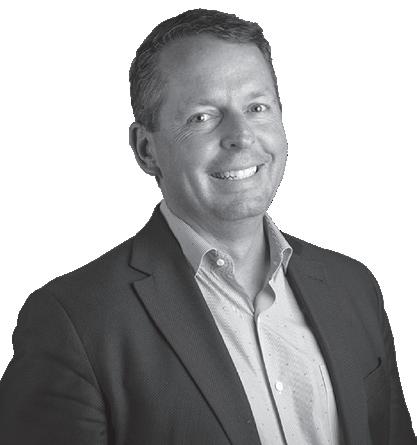
Consistency is key.
“Make sure it’s clear and in writing and that you apply it evenly,” says John Veysey, partner with the Nelson Mullins law firm.
“The company could discipline an employee for what they did on social media, but when the next employee comes along, you can’t discipline them differently.”
In the family. Companies largely can control what employees say in online forums, such as an internal Slack channel. “Family and friends may say you have the First Amendment right to tell your boss what you really think of them,” Kluger says. “But they have the right to fire you for doing it. You can’t say, for example, ‘My company makes defective products.’”
Even this field comprises a vast gray area. The National Labor Relations Act says employers, union or non-union, can’t stifle employees’ expression of their right to protest terms and conditions of employment, including engaging in dialogue about things like wages. “You can say, ‘We have a crappy health plan here,’” Kluger says. “Or if it’s about substandard wages, the employer can’t terminate or discipline an employee for that kind of content.”
The field of protected topics keeps
expanding. For instance, a push by activist shareholders and non-governmental advocacy groups for greater transparency of compensation information is producing more freedom for employees to discuss internal pay issues on social media, experts say. At the same time, under the increasing legal and regulatory scrutiny of “hostile” work environments, companies may have the obligation to act if an employee uses social media to post something about a fellow worker that could be construed as harassment or incitement of violence.
The biggest battlefield. Corporate and employee discussion of political, cultural and social issues has driven online talk in maddeningly new directions. “Millennials started this by putting a lot of pressure on companies to express views,” Kluger says. Companies may “want to stay neutral for whatever reasons, but they can’t. They’re being forced internally to take stands by employees and by consumers.”
In turn, says Veysey, “many companies are asking employees to promote these ideas on behalf of the company, saying, ‘This is our mission, and we want buy-in from our workforce.’”
Tom Shea is one CEO trying to balance on this potentially treacherous beam. “We really want to be apolitical and support the commonalities in the company,” says the head of OneStream Software, a fintech unicorn. “It’s conceited for a company to tell someone, if they want to do something that’s legal and lawful, that they can’t express themselves outside the business.”
Politicians are beginning to intervene. In 2021, for instance, Florida passed the “Stop WOKE Act,” which prevents companies from subjecting any employee “to training or instruction that espouses, promotes, advances, inculcates, or compels such individual to believe” concepts such as critical race theory, which the state’s Republican leaders believe breeds division.
States of play. More and more states are wading into the maelstrom by legislating protections that can apply to social media. Five states have laws that prohibit employers from terminating employees for off-duty conduct. Some states also extend
64 / CHIEFEXECUTIVE.NET / SPRING 2023
“It’s conceited for a company to tell someone, if they want to do something that’s legal and lawful, that they can’t express themselves outside the business.”
—Tom Shea, CEO, OneStream

whistleblower protection and limits on non-disparagement agreements, Veysey says, meaning that “companies can’t buy an employee’s silence about [corporate] behavior he thought was unlawful.”
Another changing consideration is “a trend of state laws that prohibit companies from disciplining employees for lawful out-of-work conduct,” the attorney says. In California, for instance, an upcoming law broadening the legality of cannabis consumption is also expected to extend protection of social-media commentary to that discussing marijuana use.
Enforcing conformity. Employers are harnessing social media as a powerful weapon to screen potential hires and fits for their culture, but of coure job candidates are on to that fact. College ‘are doing a better job of educating students about their social footprint, so they come in more aware that it can follow them anywhere,” says Paaras Parker, Paycor’s CHRO. Recruiting for cultural conformity doesn’t always stop missteps, so employers sometimes need to act. “We had an incident when one employee didn’t understand the implications of what they had posted,” says Andrew Pierce, CEO of legal-services provider Real Estate Holding. “We explained where the problem lay to the entire workforce and asked that the post be removed.”
Summarizes Veysey, “If a company says that, regardless of the legal headwinds we’re facing, we want to take a stand on some recent initiatives such as ESG, and we’re going to continue to do that, fine. But it’s a big difference to say that employees need to get in line and follow that. You don’t want to make it a requirement in terms and conditions of employment.”
A chief’s role. CEOs can establish paths for the company to sublimate sentiments that might end up on social media. Paycor, for instance, taps into its network of employee resource groups that “allow employ-
ees to educate each other on different topics that are important to them,” Villar says.
Establish an ombudsman’s office, for instance. Or, suggests Anzek, “Set protocols advising whether managers should follow their reports on social media, or consider one designated employee to monitor social media or a task force to address concerns with employees in a fair-minded way.”
As a matter of effectiveness and out of legal concern, experts say chiefs should insulate themselves from the front lines of social-media battles. “Be clear,” says Veysey, “about where employees need to turn with questions about this, and make sure the CEO isn’t on the hook for decisions made in any of these gray areas so they’re not asked to sit down for a deposition.”

At the same time, Clark says, CEOs must live up to their company’s own social-media policies. “It can’t be a ‘for me but not for thee’ kind of thing. You have to make sure you’re role-modeling.”
Thought police. Increasingly, politically minded employees—not just their employers—also are watching one another with an interest in enforcing corporate pointof-view conformity. A recent global survey by Ford showed that 50 percent believe brands should hold employees accountable for the things they say and do outside of work, including a remarkable 56 percent of Americans who were polled.
“If a brand says they value the environment or a specific social movement, I do think they expect the brand to back it up with what their employees are doing,” says Brace of Ford, which conducts an annual worldwide poll of tens of thousands of people. “They want alignment. And I expect that kind of attitude to increase.”
For many CEOs, this is a thorny prospect. “If you believe in American ideals, then certainly a company telling people what they can and cannot say doesn’t fit well,” says Stokes. “On the other hand, we as an organization have values and ways in which we operate where, if someone is putting out hate speech or something else totally egregious, then that would be cause for a conversation about that employee’s behavior.” CE
66 / CHIEFEXECUTIVE.NET / SPRING 2023
“If you believe in American ideals, then certainly a company telling people what they can and cannot say doesn’t fit well.”
—Cheryl Stokes, CEO, CNext
Stop Settling
Is your CFO stuck reporting the past instead of providing the strategic perspectives you need to create the future?
The CFO Network can help elevate your CFO to think and act as the trusted advisor you need to help your company achieve its goals. Through carefully-facilitated peer meetings focused on actionable results, your CFO will help you tackle pressing business challenges like:

• Key metrics that improve profitability

• Improving healthcare benefits while reducing costs
• Competitor benchmarks and M&A targets to fuel growth
• Improving risk controls to avoid disaster in today’s dynamic, chaotic environment • Pricing analyses that will improve margin
THE CFO A CH IEF EX ECUT IV E GRO UP CO MM UNIT Y
Call Rob Grabill at (201) 323-3716 or visit TheCFONetwork.org
• Vendor-free, honest evaluations on technology investments
WE HAVE LIFTOFF
Honda was in a familiar position with its annual Rose Parade float leading this year’s New Year’s Day spectacle in Pasadena, California. But what was that strange-looking vehicle hanging over the rolling platform along with Honda’s cars, a motorcycle and a jet?
It was Honda’s CGI concept hybrid eVTOL. Looking like a half-helicopter, half-airplane, the electric vertical takeoff and landing vehicle demonstrated the company’s transportation vision for the future. Honda has also featured CGI in a new TV ad with a similar theme.“ It has potential, but it’s a long-term project,” says Hirohide Ezuma, Honda’s eVTOL development leader. “It’s not something you’re going to see immediately.” In fact, Honda hasn’t yet committed to make an eVTOL.
Yet automakers, aerospace companies and dozens of startups—many in Silicon Valley—are working briskly to bring VTOLs, both fully electric, and others, to the market as soon as they can. “The immediate impact potential is immense,” says Sean Moore, head of aerospace and defense at Capgemini Americas consultants. “Imagine a sky full of non-polluting eVTOLs with lower operating costs than helicopters, swiftly transporting commuters by bypassing the congestion across New York’s East River and delivering you to your airport before the coffee gets cold.”
Indeed, the VTOL race could create a $1.5 trillion autonomous urban aircraft industry by 2040, Morgan Stanley predicts. Already there have been four significant IPOs as eVTOL enterprises jockey for position in the vanguard of a new “advanced air mobility” paradigm.

“You can’t fly hundreds of people for thousands of miles using electric aircraft,” says Andrew Stein, CEO of Eve, an eVTOL company spun off from Brazilian aircraft giant Embraer. “But you can fly a few people not that far, and there is clear demand for that. For anyone who’s been stuck in traffic, it’s very easy to understand the sense that you could be flying.”
The first commercialized VTOLs aren’t likely for a few years, and urban skies buzzing with this new vehicle form are still at least a decade away. But it isn’t too early to begin calculating the impact VTOLs might have on private aviation, and on the aviation industry in general.
VTOLs combine proven technologies with limited objectives and the prospect of filling a yawning need, as well as a potential sustainability narrative. Drones—in China, even airplane-size ones—are already ubiquitous, and improvements in batteries, AI and satellite communications are expanding the possibilities for eVTOLs. Large infusions of capital will speed things along.
Projected costs are relatively reasonable. EVTOLs will sell from around $1 million to $4 million and more, a fraction of what many fixed-wing private aircraft demand. Operating costs may be 40 percent less than for a conventional helicopter, manufacturers claim. Major first customers including airlines, helicopter operators and ridesharing mobility companies have already raised their hands to order thousands of future VTOLs.
Industry players are promising rides that cost from $3 to $6 per seat mile, less than for a chopper, even through helicopter ride-sharing services such as Blade. “Prices for eVTOLs will start out around an Uber Black–style ticket, and then [pilotless] autonomy will let you bring
68 / CHIEFEXECUTIVE.NET / SPRING 2023
PLANE ADVANTAGE
Dozens of companies are working toward vertical landing and takeoff planes that cut costs and emissions. A look at what’s in the offing for future air travel.
BY DALE BUSS
prices down to almost a regular Uber-level ticket price,” claims Matheu Parr, customer director at Rolls-Royce Electrical, which is developing power plants for eVTOLs.
Initially, eVTOLs are likely to be used in shipping applications, because of lower technological barriers and fewer regulatory hurdles. But some envision eVTOLs becoming the environmentally friendlier heart of new urban-taxi systems that could trump helicopters, ferrying passengers around metro areas or to local airports. “If you want to fly to another city instead of driving, you could take an eVTOL flight to a smaller airport and then another aircraft to go to your final destination,” says Gaël Le Bris, vice president of aviation planning for WSP USA.
EVTOLs differ from helicopters in that they use zero-emission electric motors rather than airplane-fueled engines, have flexible configurations of tilting wings and rotors to direct thrust vertically or horizontally, and employ propulsion that is typically distributed rather than centralized on the aircraft. They require a takeoff-and-landing area much smaller than a helipad. And their recharging infrastructure is higher-voltage but similar to that required for all-electric automobiles. For good measure, there are also hybrid gas-electric VTOLs, non-electric ones and some that are actually flying cars that can double as on-the-road transportation.
Unlike automobiles, where carmakers have essentially pulled electrification of their fleets ahead of efforts to make them completely driverless, autonomous operation shares the front seat for VTOLs. “Straight to autonomy is a core first principle” for eVTOLs, Marc Allen, Boeing’s chief strategy officer, said in a recent press release about the airplane maker’s $450 million in new funding for startup Wisk.
EVTOL makers note that their crafts differ from driverless cars in that on-the-ground transportation depends on safely navigating a complicated fixed infrastructure that isn’t found in the air. At the same time, the safety implications of an eVTOL crashing to the
ground can be much more grave.
This is one reason certification of VTOLs by the Federal Aviation Administration will be the biggest barrier to rapid deployment. Each VTOL operator will require multiple approvals of its aircraft design, its manufacturing process, and how it will operate in the air-transportation system. Then there’s how to design an infrastructure of vertiports, a challenge akin to providing networks of charging stations for electric cars. “It’s a massive roadblock to certify any aircraft in a new regulatory environment,” Stein says.
Still, many VTOL players believe the category can be certified within a few years, and in 2022 the FAA seemed to signal a cooperative stance by adding a “vertical-lift” aircraft category to the existing regulatory framework
for commercial aircraft operations.
Meanwhile, eVTOL makers are focusing on substantial obstacles, such as propulsion technology. Few battery-powered drones can carry much more than a light payload at present. “It’ll be possible to travel 100 kilometers on one of these aircraft, but if you want to travel farther, we’ll need improvements in batteries and energy-storage systems,” Parr says. “We need improvements in chemistry.”

The infrastructure for a vast population of eVTOLs also remains imaginary. “Where are all these aircraft going to operate, to and from, and where will the charger stations be?” asks Andrew Schmertz, CEO of Hopscotch Air, an on-demand regional jet-charter service that is advising VTOL startup Transcend Air. “They can be a significant fire hazard.”
But the notion of a network of solar-pow-
CEO MAGAZINE /SPRING 2023 / 69
LEFT: Embraer spinoff Eve plans to reshape urban travel with environmentally friendly, autonomous-ready aircraft.
Aska bills its A5 as a prototype of the world’s first driveand-fly eVTOL.
Honda entered the eVTOL fray with a hybrid aircraft that resembles a cross between a helicopter and an airplane.
ered chargers on top of sun-bathed urban towers seems to fit the eVTOL vision. “If you’re talking about taking vehicles into a city center, no one likes the idea of having big tanks of jet fuel on top of downtown office buildings,” says Ben Tigner, CEO of startup Overair. “But there is electric wiring on tops of all sorts of office buildings.”
Challenges stiffen at private-aviation airports. “Most of these airports were built decades ago, and their supply of electricity never anticipated replacing liquid fuels,” says Desmond Wheatley, CEO of Beam Global, a provider of EV-charging systems.
Safety is also a concern. VTOLs are small planes that don’t do well in inclement weather, especially that found atop skyscrapers. Helicopter analogies are also painful. In 2019, a helicopter crash-landed on a midtown building in New York City, killing the pilot. Manhattan currently has three major heliports on the Hudson and East rivers and is considered unlikely ever to allow eVTOLs to hop between skyscrapers. That cuts the convenience factor significantly for New Yorkers.
Here are some of the major and hopeful players in VTOLs:
Honda: The automaker says its turbine-electric motor hybrid approach and carbon fuselage will give CGI a range of more than 400 kilometers, about four times farther than purely electric VTOLs.
Archer: Public since shortly after receiving a $1 billion order from United Airlines in 2021, Archer has announced a deal to develop an eVTOL with Stellantis. The global automaker will invest up to $150 million and mass-produce Archer’s eVTOL in Covington, Georgia, beginning in 2024.
Lilium: The Munich-based startup flew a demonstration in 2019 of its eVTOL, which can travel up to 300 kilometers on a charge.

It plans to make the vehicles autonomous and develop a network of 10 vertiports in the U.S.
Eve: It’s developing an electric eVTOL with a capacity of four people, increasing to six with autonomous piloting. Eve has already sold nearly 3,000 at a list price of $3 million and plans delivery in 2026.
Wisk: The Boeing partner is on its sixthgen eVTOL, which has completed more than 1,500 test flights, and predicts scaling to 14 million annual flights across 20 cities.
Joby: The startup has said it plans to begin passenger service in 2025.
Overair: Its Butterfly model has a top speed of around 200 mph.
Aska: The company is developing a hybrid gas-electric flying car that lists for $789,000. Aska Founder Guy Kaplinsky believes the eVTOL proposition advances the platform because it doesn’t require any of the trappings of aviation. “We have built a vehicle that requires zero infrastructure investment to complete its mission, door to door, with the last mile on the road driving while most commuting will be in the air,” he says.
Which companies will win the VTOL derby? Honda cites extensive experience with the highly demanding electrical-system requirements of Formula 1 auto racing and, of course, several years of Honda Jets that are now some of the most highly regarded craft in private aviation. “We’ll be using all of those aspects together,” says Honda’s Ezuma.
But most participants are backing cross-industry partnerships. “Aerospace companies come in with an understanding of what it takes to deliver a platform safely to a much higher standard than any other industry in the world,” notes Rolls-Royce’s Parr. “Auto companies come in with a past decade of experience in electrifying platforms and investing in platforms and infrastructure to deliver them. Their skill sets are complementary.”
Archer is working with Stellantis. RollsRoyce is working with Hyundai as well as Eve, while Eve itself has brought in Porsche as a consultant. The luxury carmaker is “teaching us more about how to organize distribution and manufacturing,” Eve’s Stein says. “It’ll be only a few thousand, not a few million, vehicles, but we need to have that understanding of larger scales.” CE
70 / CHIEFEXECUTIVE.NET / SPRING 2023

not just a donation.
a roof and a bed.
a bottle of water.
a warm meal.
feeling safe. Join Us. Learn more at redcross.org
It’s
It’s
It’s
It’s
It’s
ED QUINLAN \ PRESIDENT, CHEM-DRY

LIVING YOUR PRINCIPLES
SINCE STEPPING IN AS Chem-Dry’s president in 2019, I’ve focused on aligning around a central vision for the 45-year-old company’s future, which included reshaping internal and franchisee communication processes as well as the messaging used across communication materials and channels. While these are monster initiatives, four tried-and-true leadership best practices have paved the way to new avenues for sustained growth:
1. Live your brand principles at every level
The culture of any brand can be traced back to a key set of experiences and interactions built through pattern, reputation and consistency. It is important to “do the right thing” at every level across the organization.
At Chem-Dry, we have high expectations for quality performance, but we also extend those expectations into our business relationships. A healthy deep clean is expected on every job, but the kindness and professional expertise of our technicians create a standing relationship where clients know that we look out for their best interests throughout their home. That principle is demonstrated by thousands of franchise owners across more than 50 countries, who often help each other through work support, advice, mentoring and sharing.
2. Expect change and deliver great results
Challenges should not change a business’s development plans, only the approach of how you reach those goals. Any change, whether by the forces of nature or by strategic planning, is an opportunity to evolve and improve. For example, when Google made changes to its algorithm, we adapted to support our franchisees in hyper-localizing their efforts to maximize SEO and local business listings.
Each change is a new chance to solidify a commitment to premium results. Metrics move and evolve, but the ability to drive toward success with measurable impacts is rooted in culture. This gives your organization a significant advantage in helping achieve strong results.
3. Communicate and connect
Clear, regular communication is critically important. This extends to the little things, such as ensuring that department meetings are routine, with useful agendas and accountability to metrics. Leveraging email, texting and chats as a complement to traditional resources such as events, newsletters and mailings is also important. A robust and orchestrated communication approach where company vision and goals are referenced at every level is essential.
At Chem-Dry, we implemented a unified approach to weekly email communication. Each tackles a different area of the business (i.e., marketing, operations, technical, service excellence), addressing how each impacts our company vision. As a result, we have seen improved open rates, driving overall engagement that contributes to the bottom line.
4. Lead like a lion
The lion is not the fastest animal in the jungle, nor the largest—but the lion recognizes the importance of balance across the pride. The lion seeks to build a community environment that supports stability and consistency, a deep sense of pride and a fierce loyalty—a willingness to work together to achieve goals.
Franchise leaders invite their networks to participate in initiatives—and the best listen closely to their franchisees to build initiatives that are rooted at the franchisee level. Together, we solve problems, streamline efficiencies or remove obstacles to growth as defined by the franchisees. Ongoing communication, a willingness to advance a future-promising agenda and a care for the individual franchisees creates a balance and unity across the network and enables the group to work together to make remarkable things happen.
The best leaders listen to their hearts in addition to the sensibilities of their minds—and recognize that we make the best impacts when we seek to improve ourselves, our organizations and our communities with aligned goals. The legacy is not only built but also maintained by these key principles.
72 / CHIEFEXECUTIVE.NET / SPRING 2023 LAST WORD
A legacy business has to find growth while staying true to its roots. Some tactics.
CE
Ed Quinlan is president of carpet and upholstery cleaning service Chem-Dry, part of the BELFOR franchise group.
RESEARCH
Financial Performance Benchmarks Subscription For U.S. Companies
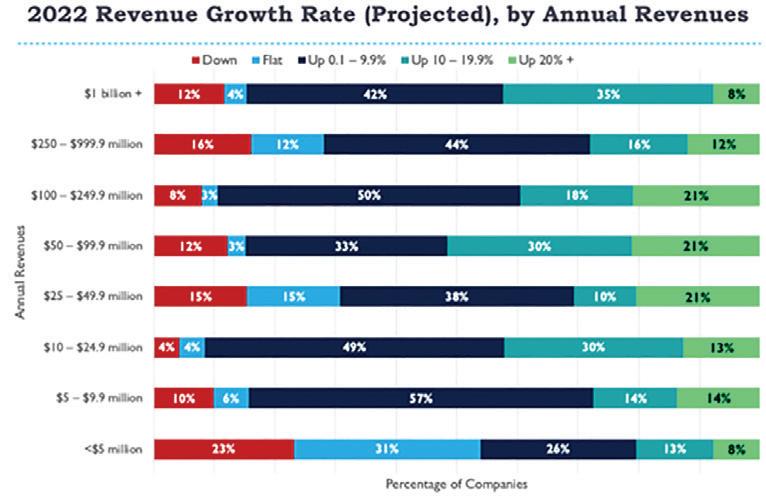
Quantify the financial impact of major decisions you face with the only tool in the market that will help you develop more accurate projections, confidently set prices, create incentives that have impact and guide your company to success with valuable KPI data.
Your subscription, delivered in monthly modules, provides an in-depth look into pricing strategies, departmental staffing costs and turnover ratios, days receivables/payables, R&D budgets, and more, to help you benchmark your operations against peers and drive growth. Totaling over 450 data-rich charts and graphs each year, the monthly modules include:
• The Year Ahead – Special CEO Confidence Index (Jan/Feb)
• Compensation Trends (March)
• Revenue and Pricing KPIs (April)
• Profitability KPIs (May)
• COGS KPIs (June/July)
• Marketing and Sales KPIs (August)
• R&D KPIs (September)
• G&A KPIs (October)
• Working Capital KPIs (November)
• Employee Staffing and Turnover KPIs (December) SAMPLES OF CHARTS INCLUDE:
Use code CMAP300 to save $300

you
detailed financials
U.S. companies.
The closest
can get to examining the
and operating results of hundreds of
To learn
and to access the data, visit:
more
ChiefExecutive.net/BenchmarksReport
Receive immediate access to the prior 12-months of data when you subscribe today!










































































































































 Modulex • Pune, India
Modulex • Pune, India






















































 Governor Glenn Youngkin is committed to making Virginia the best business location in America.
Governor Glenn Youngkin is committed to making Virginia the best business location in America.









































